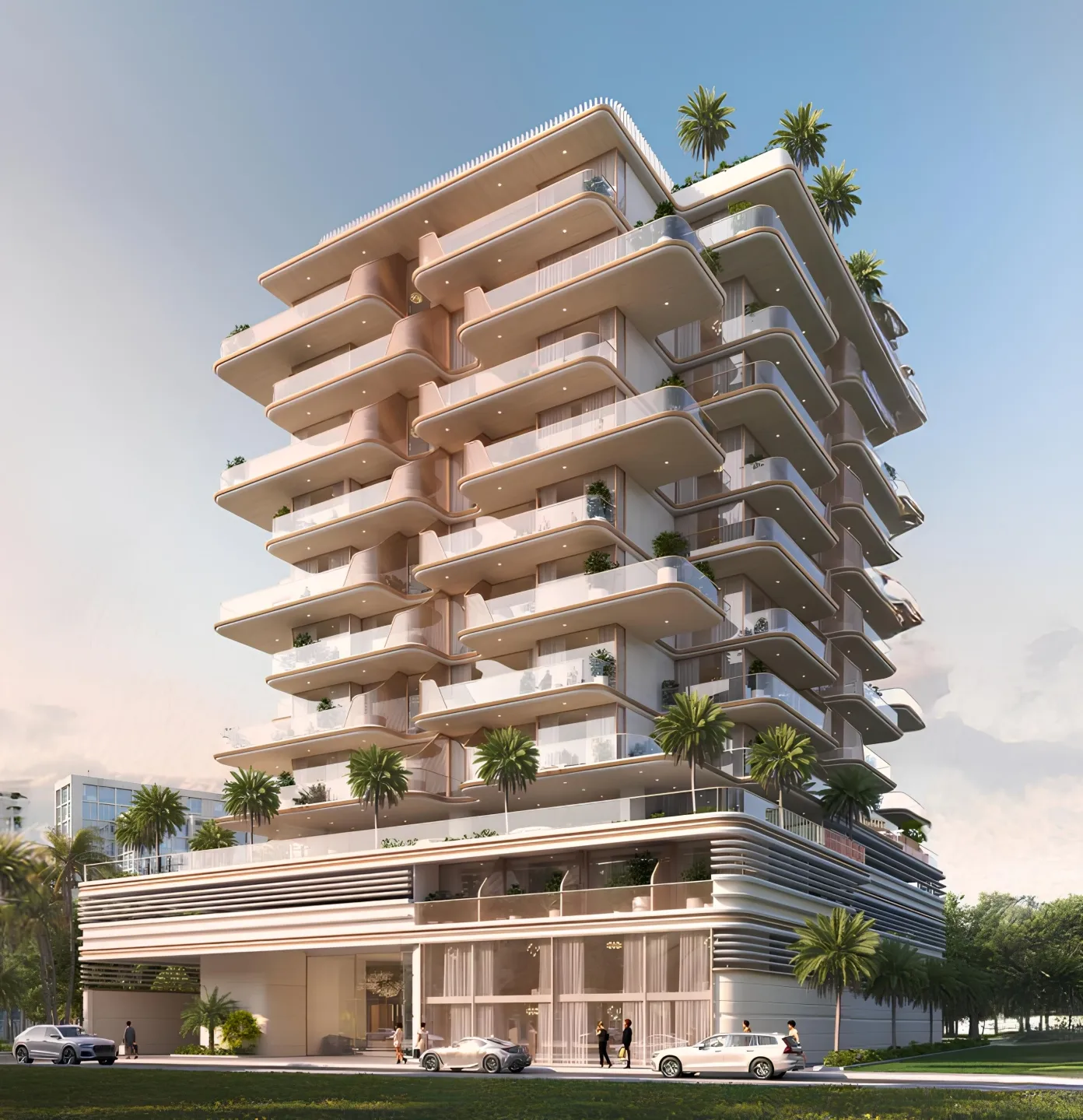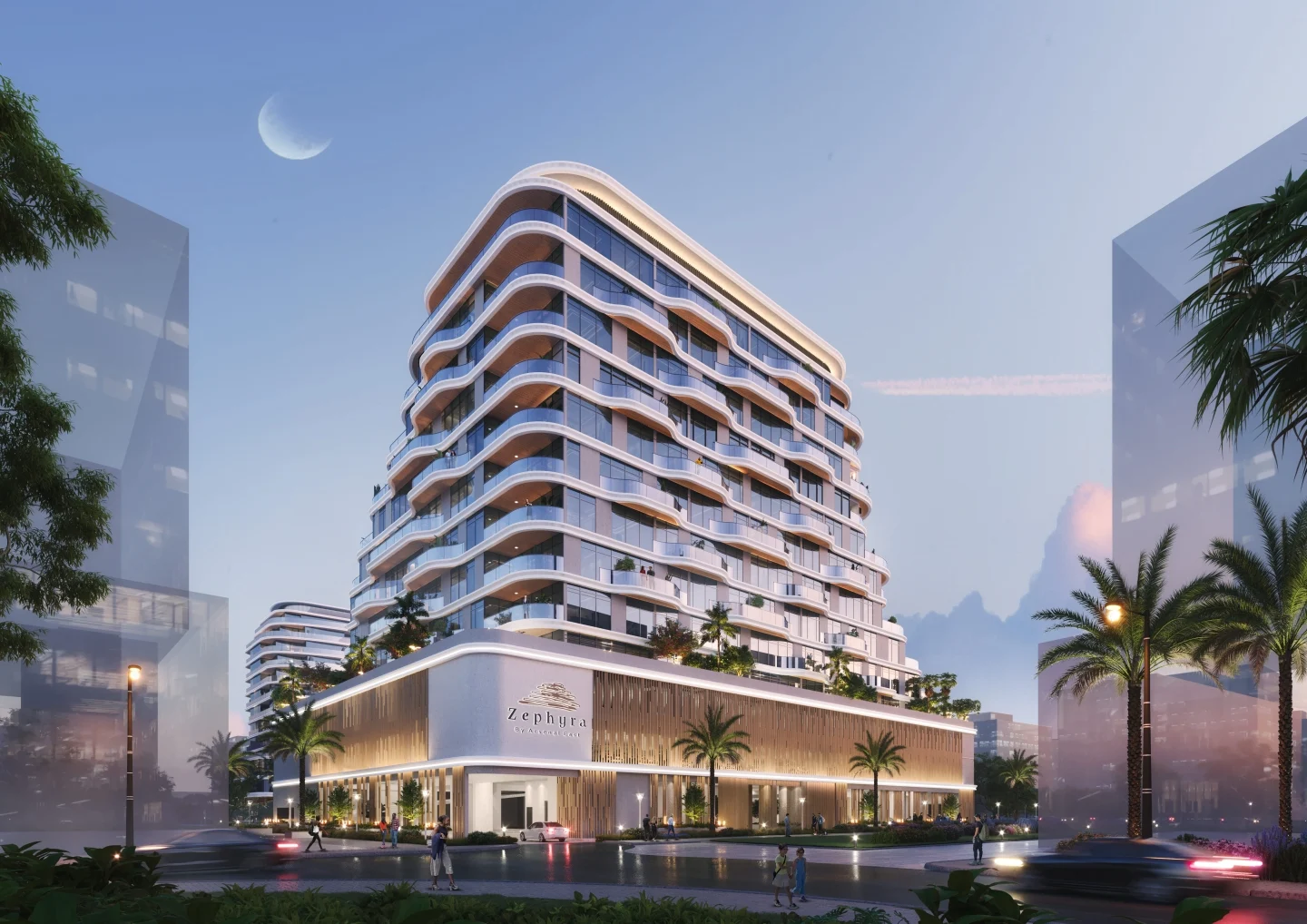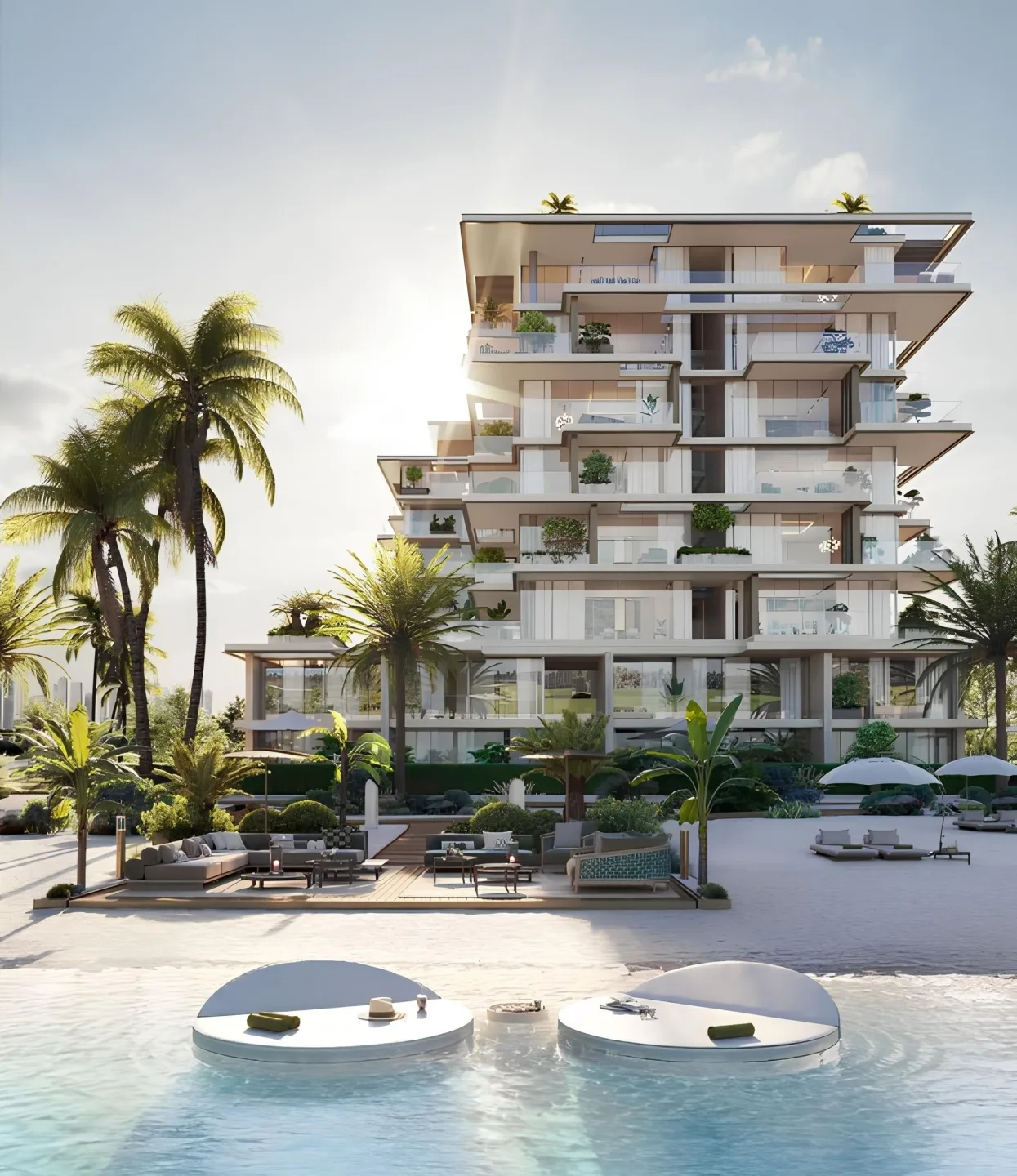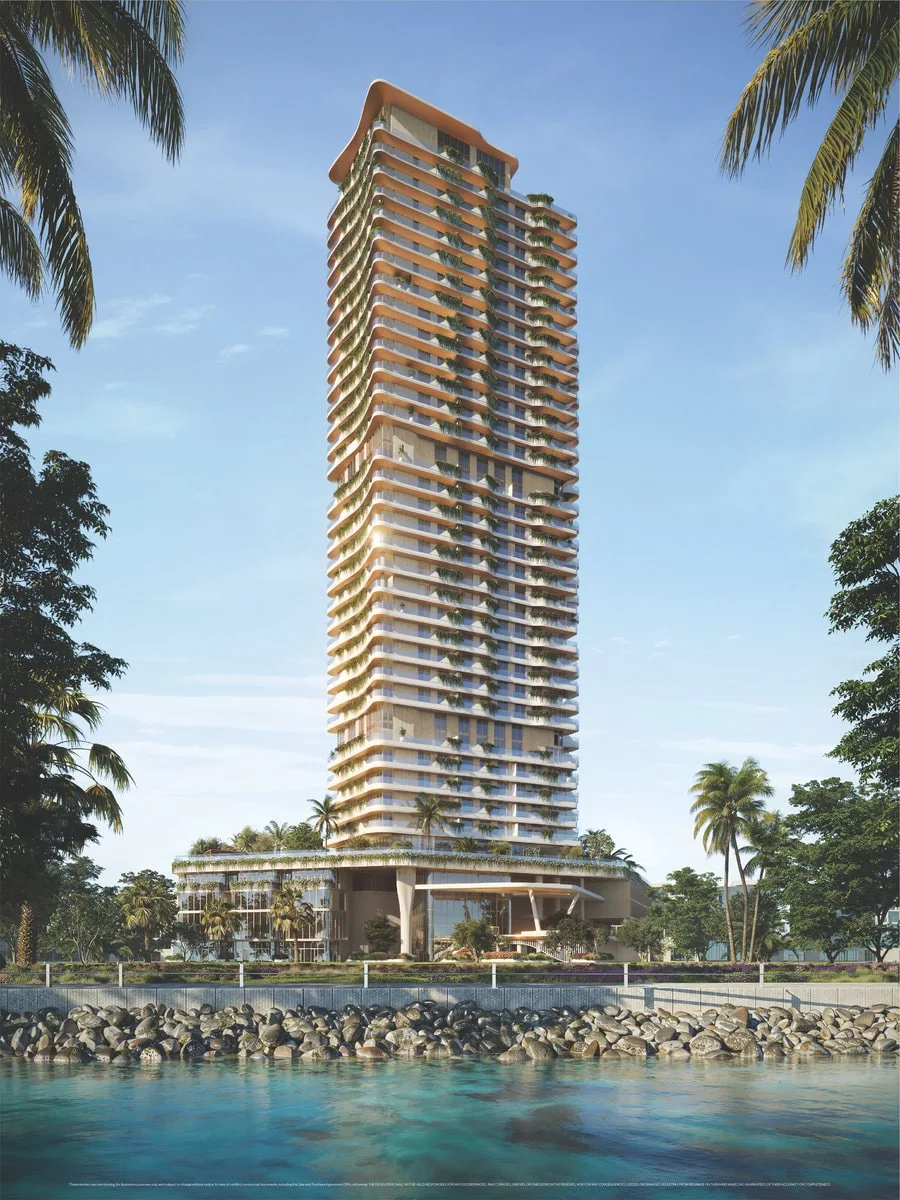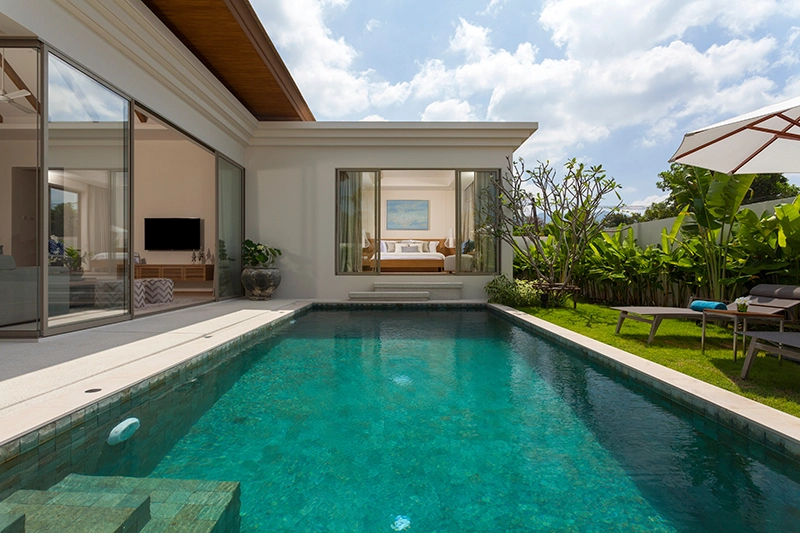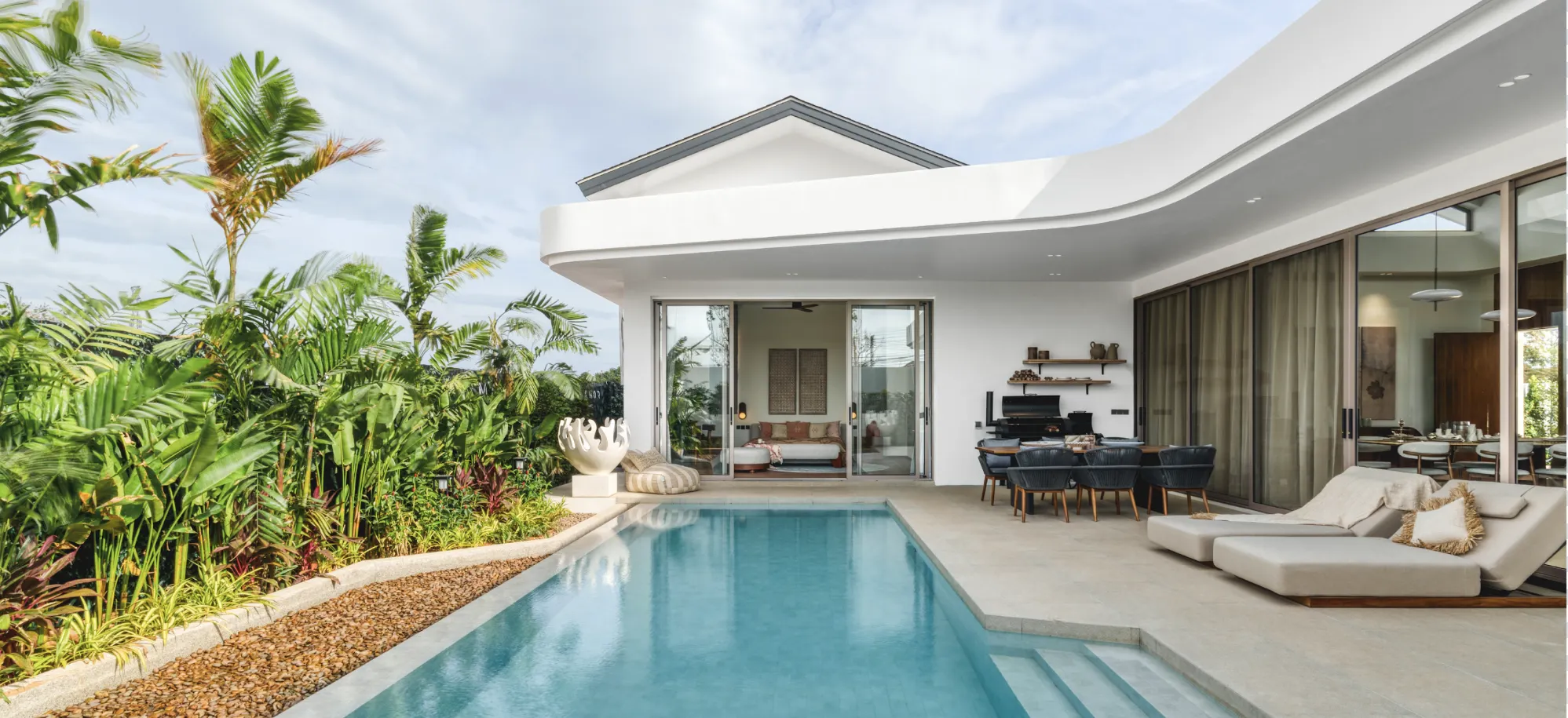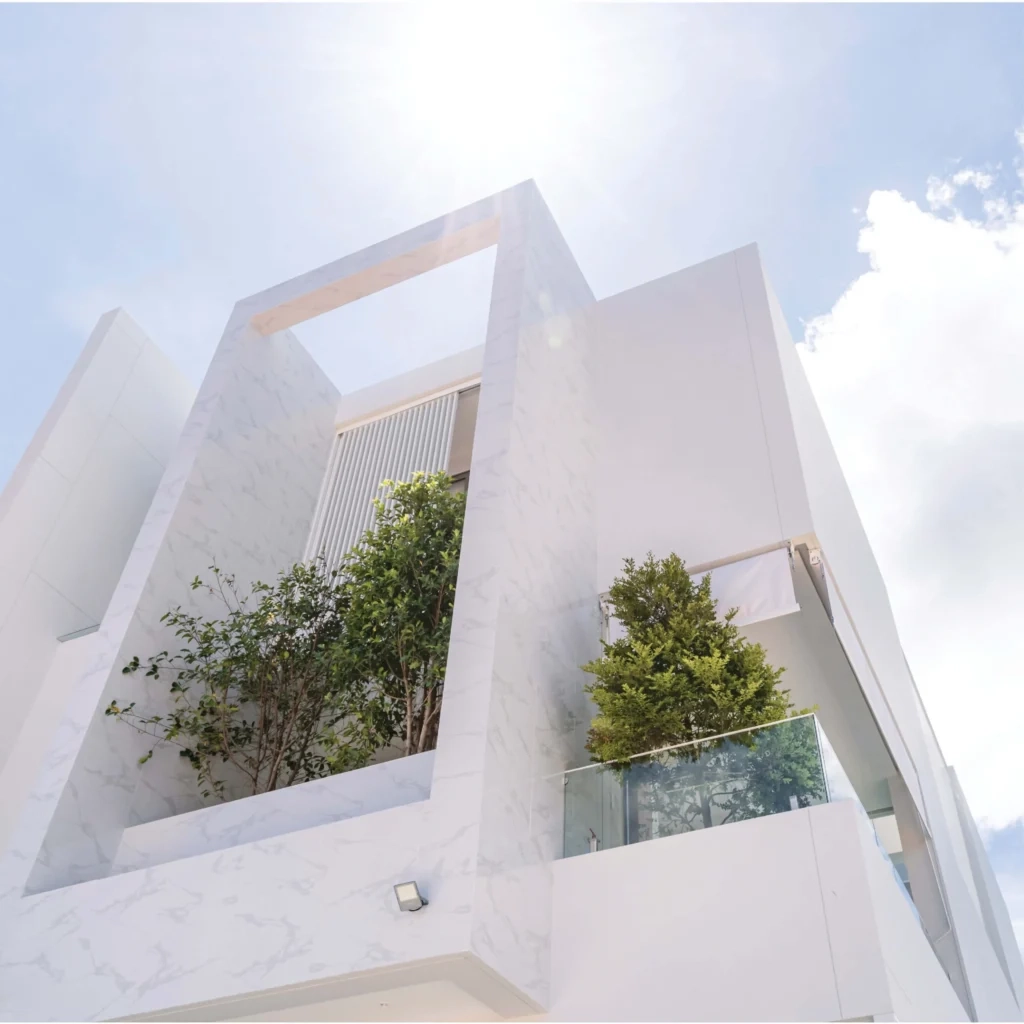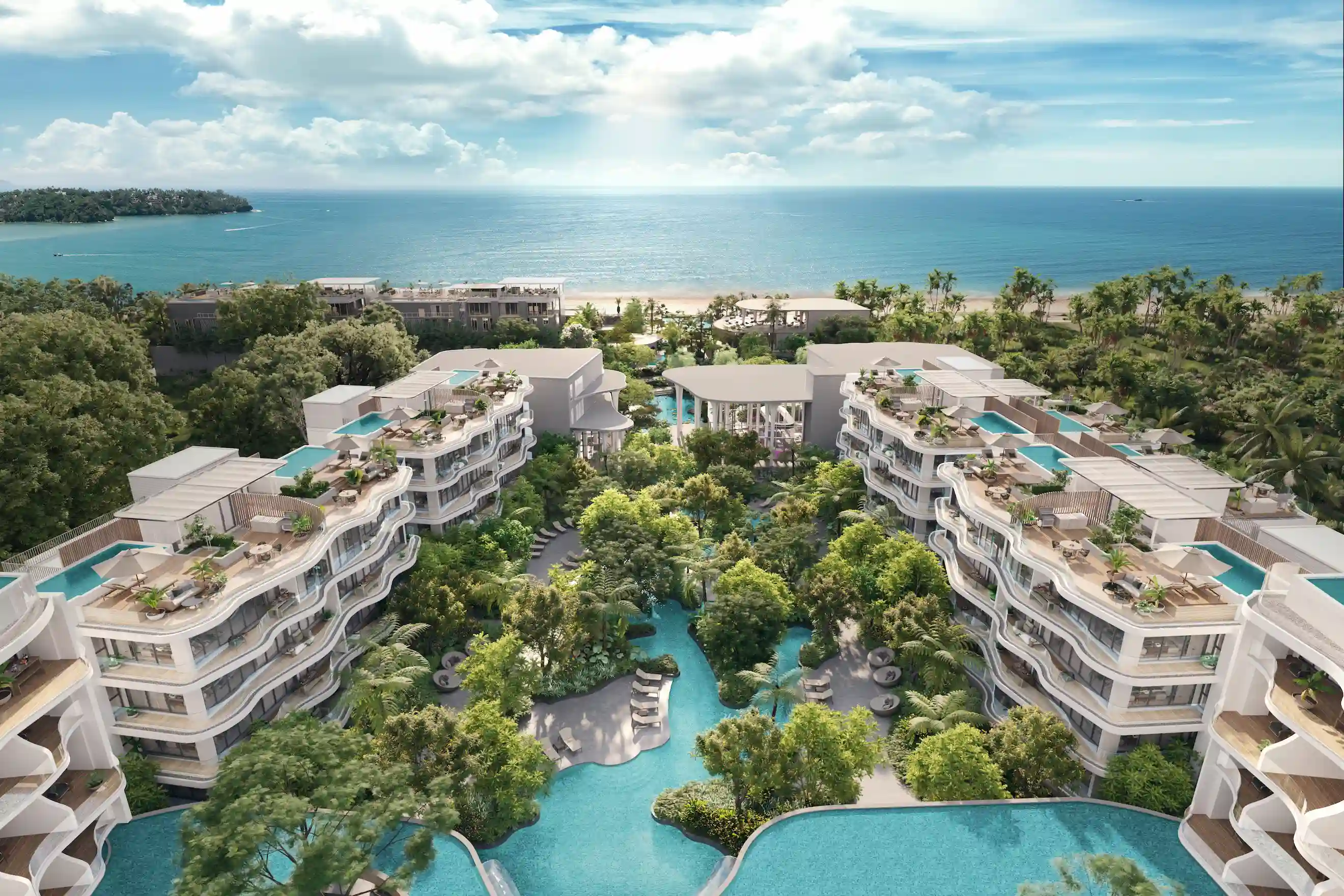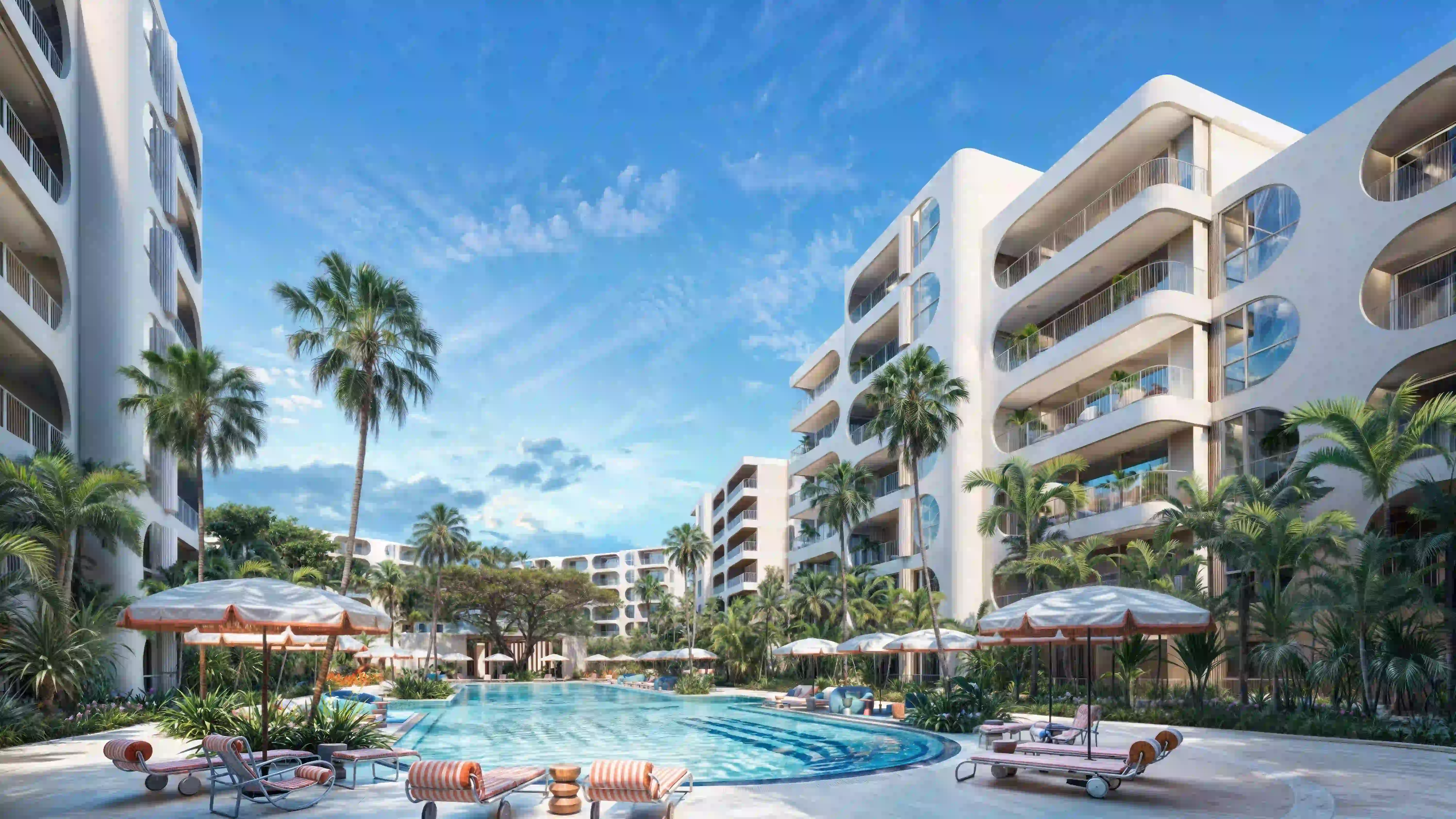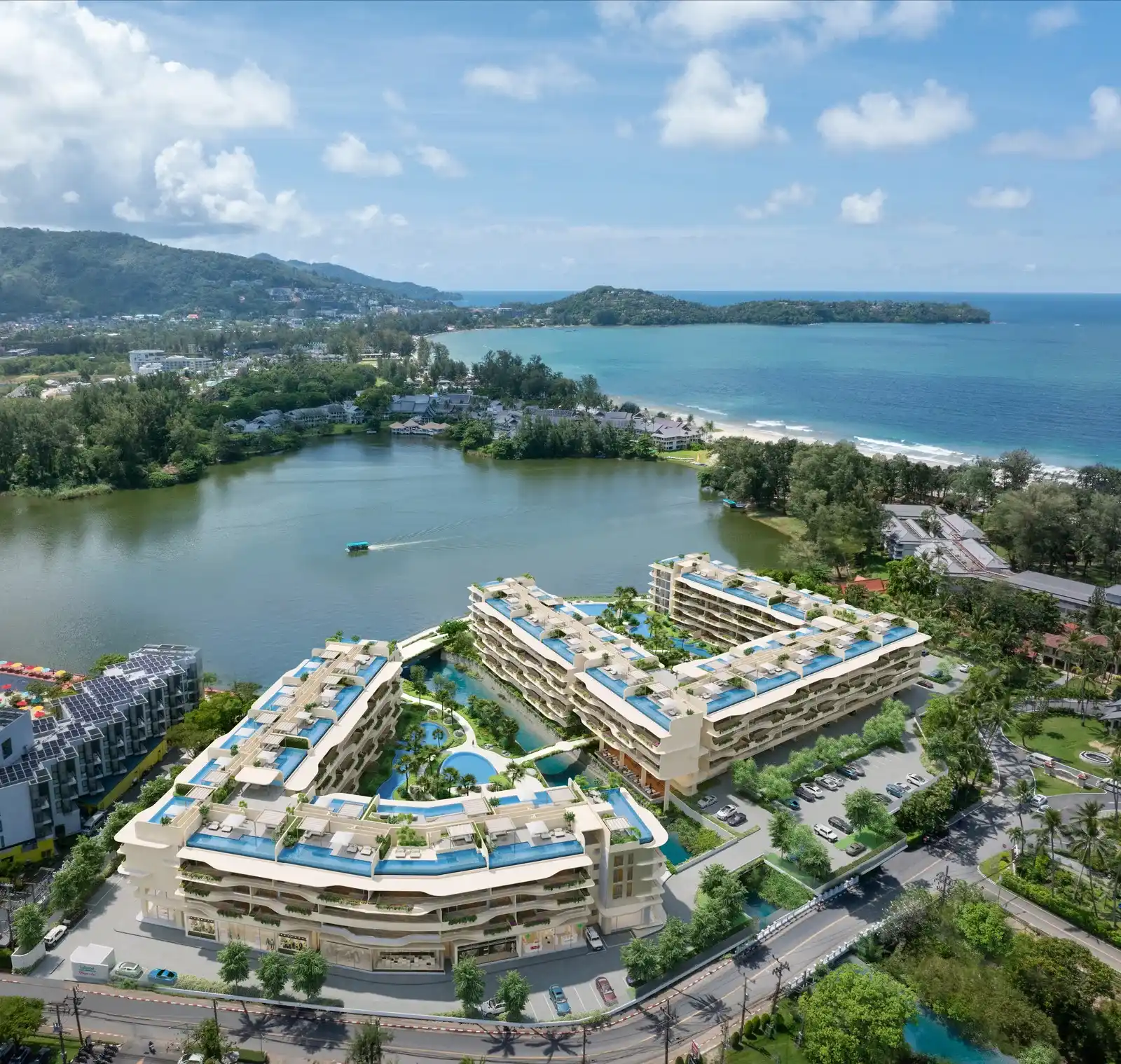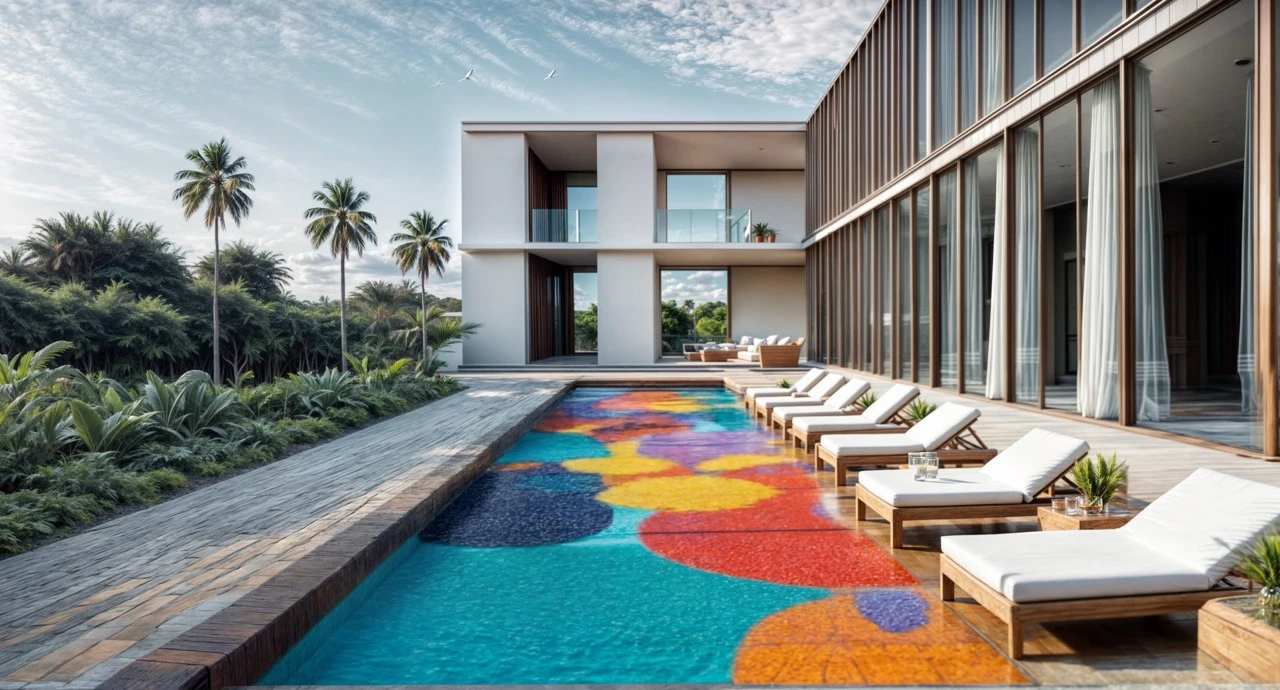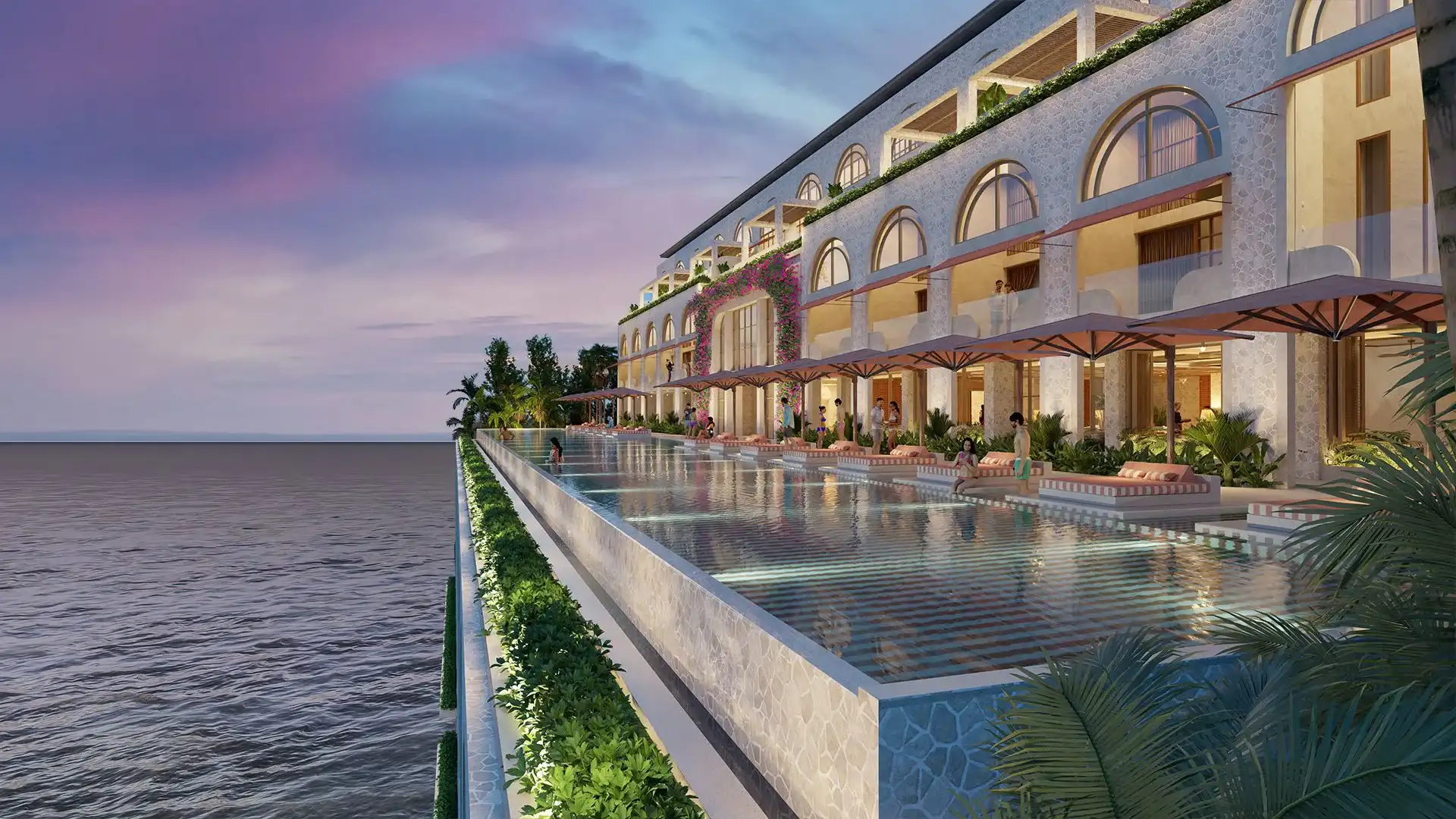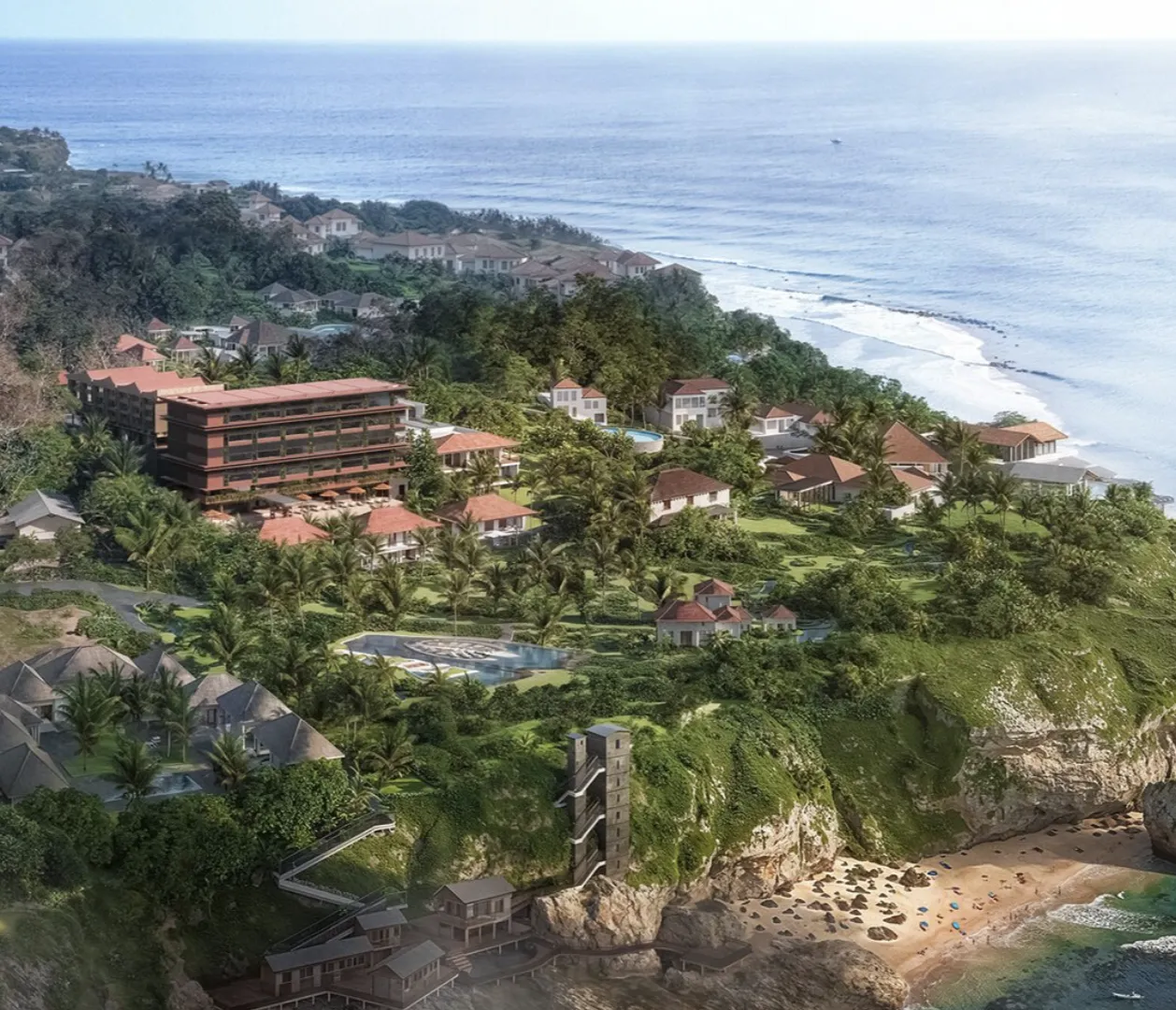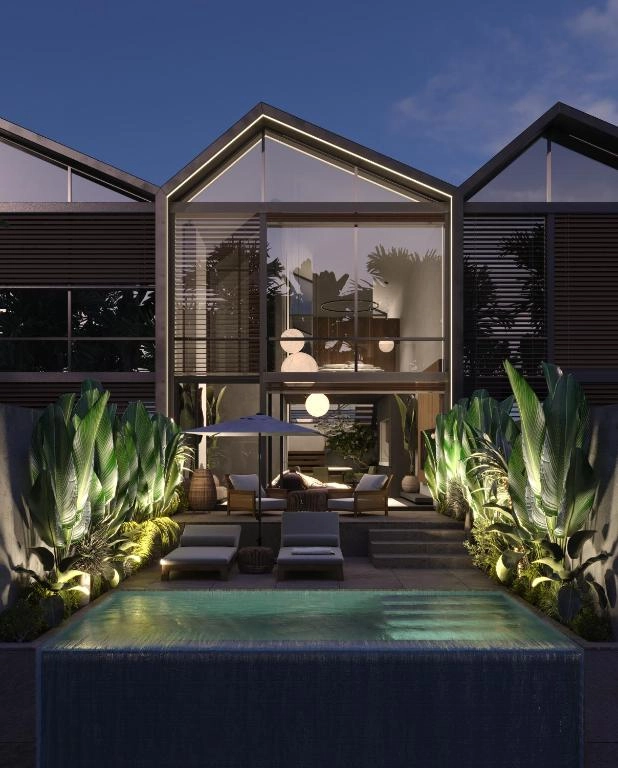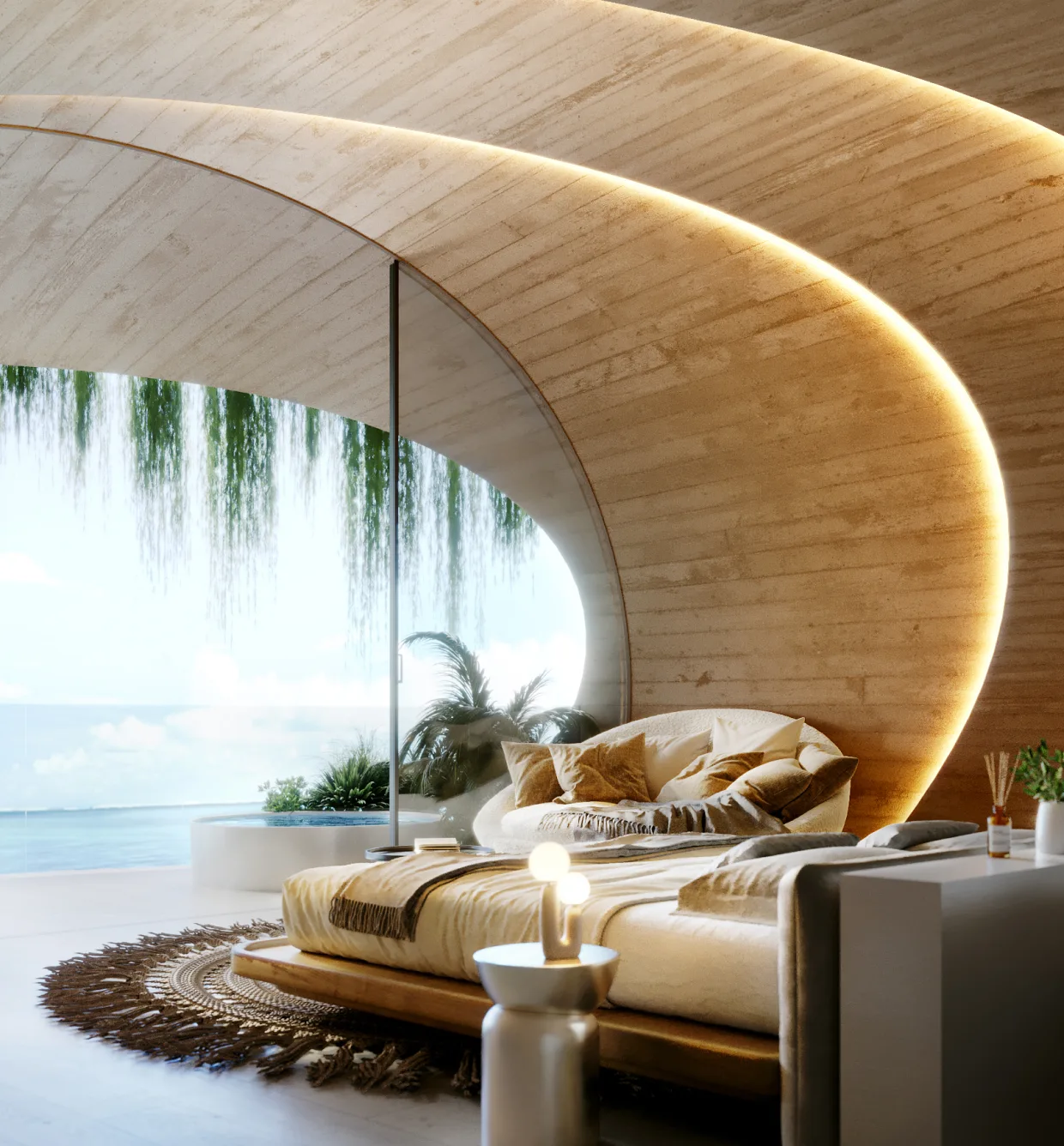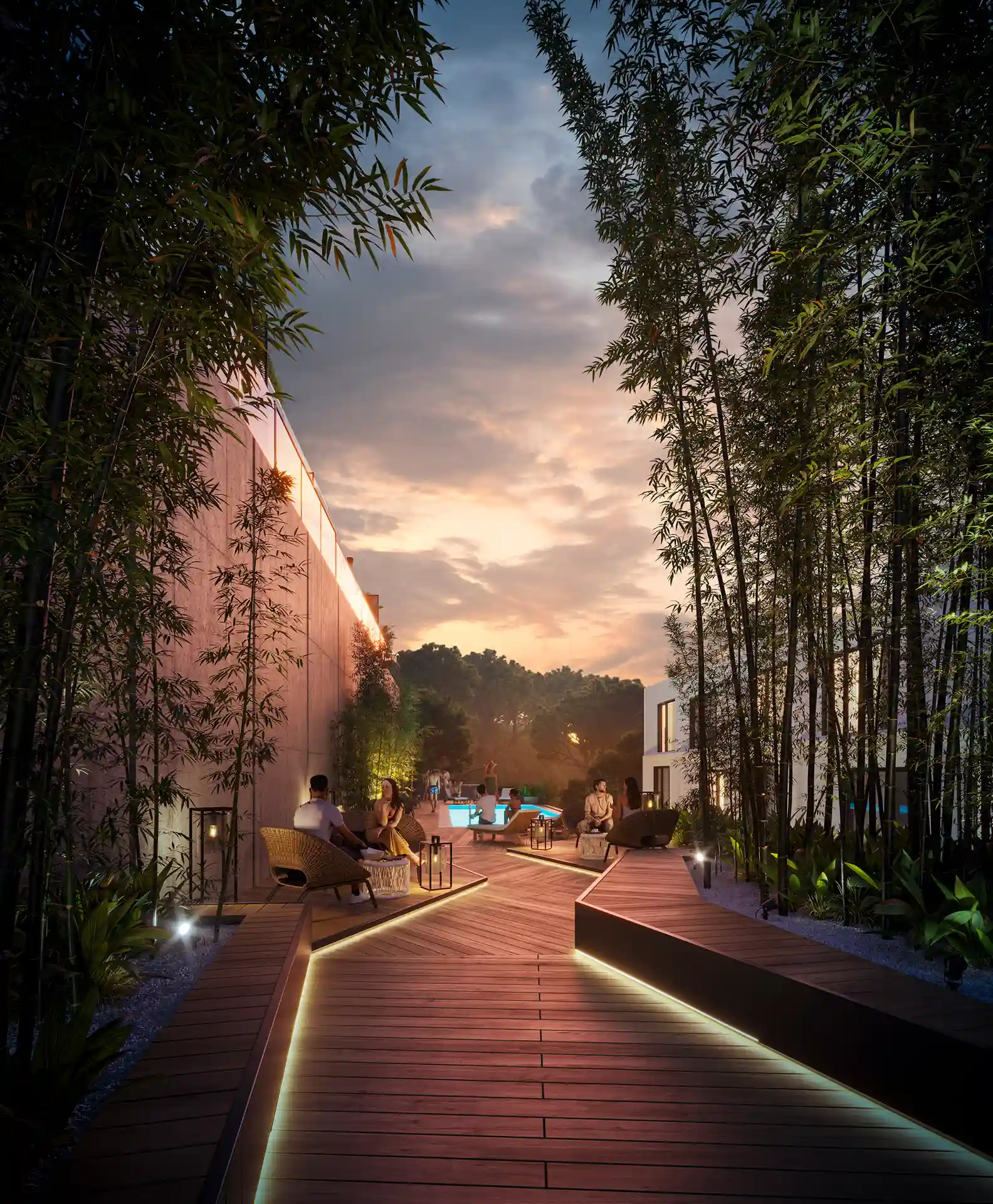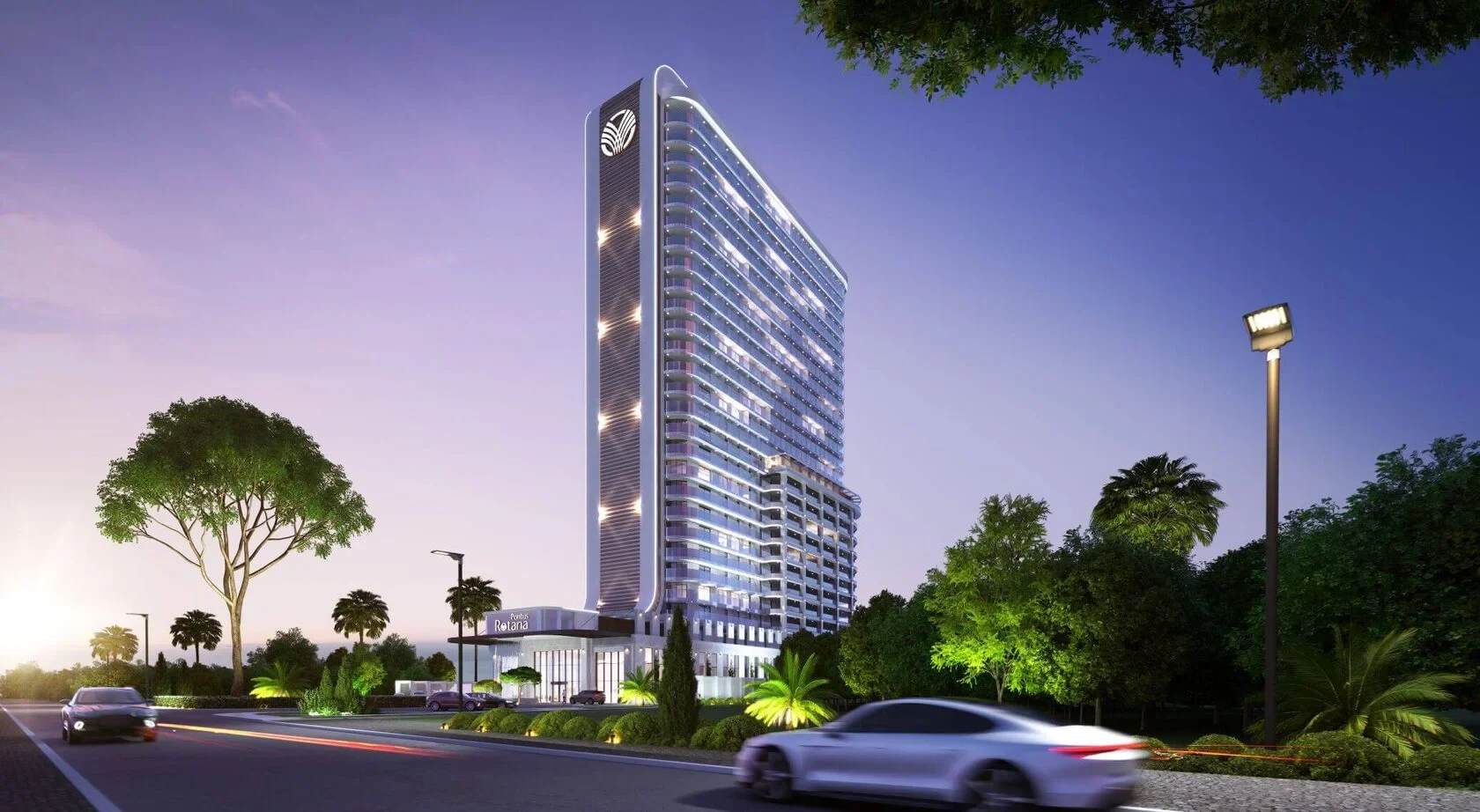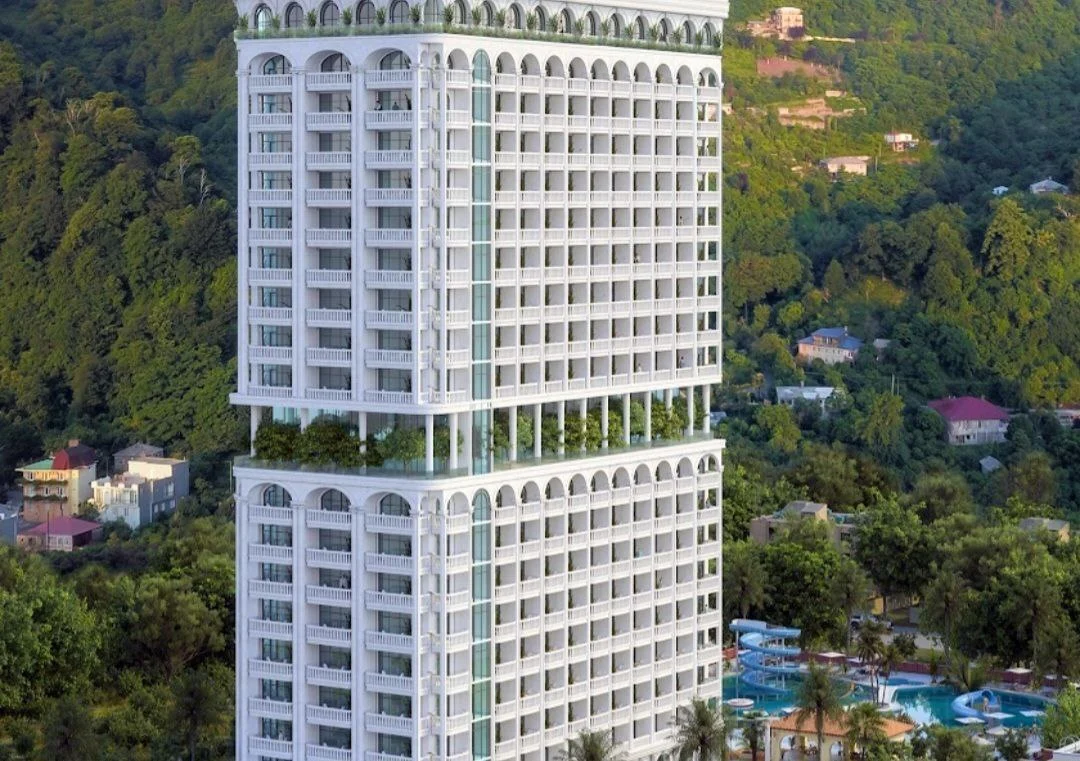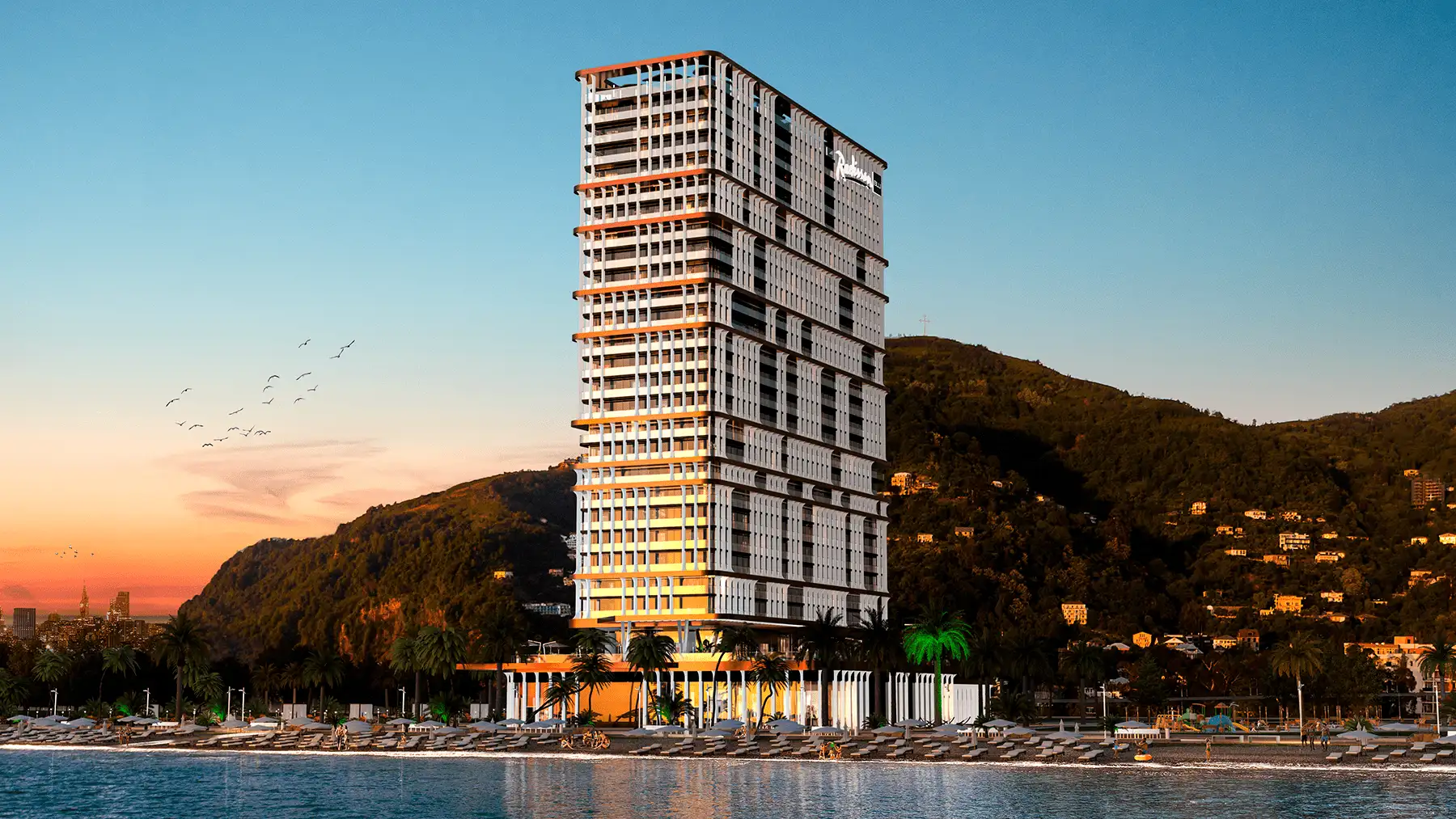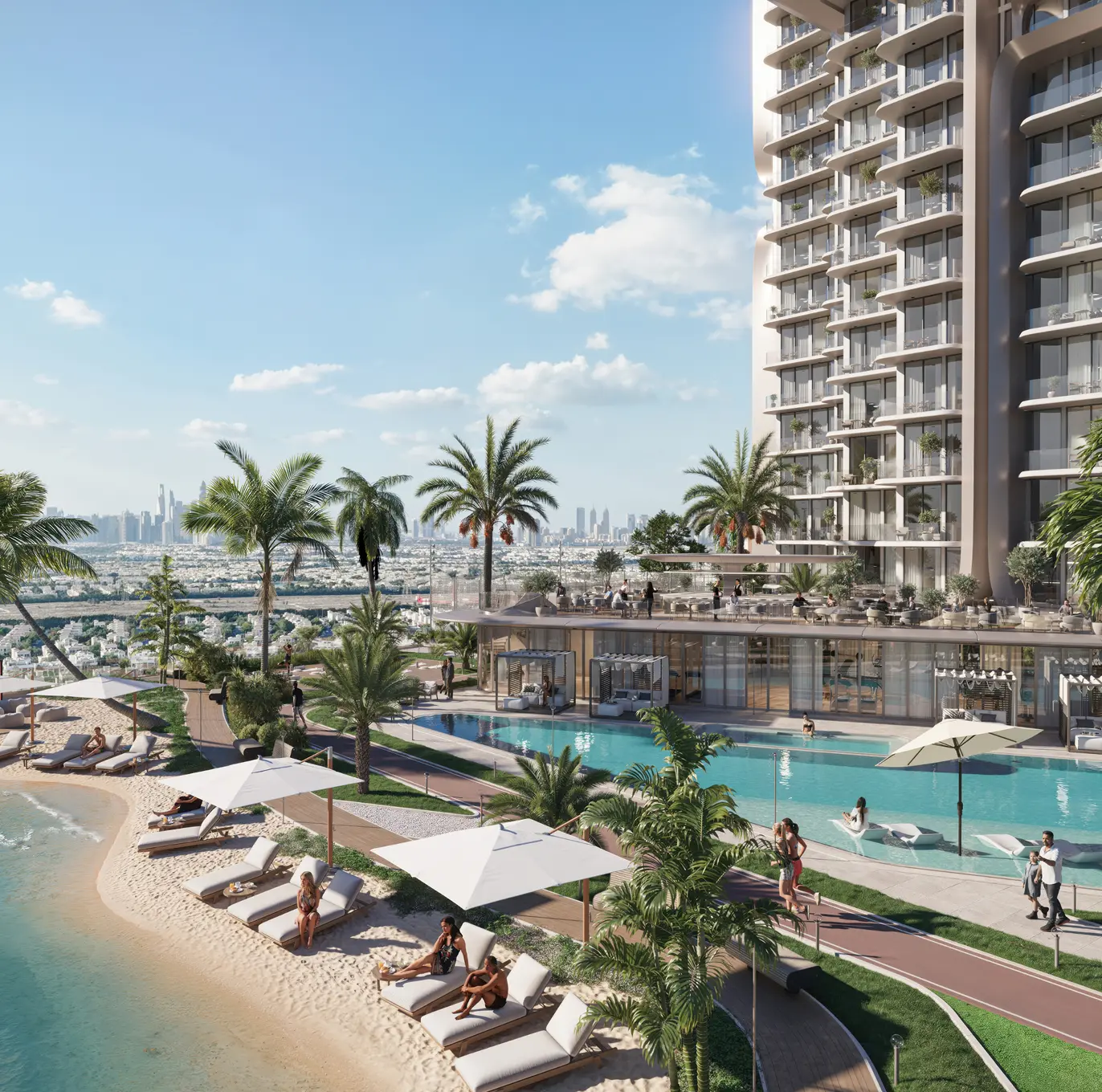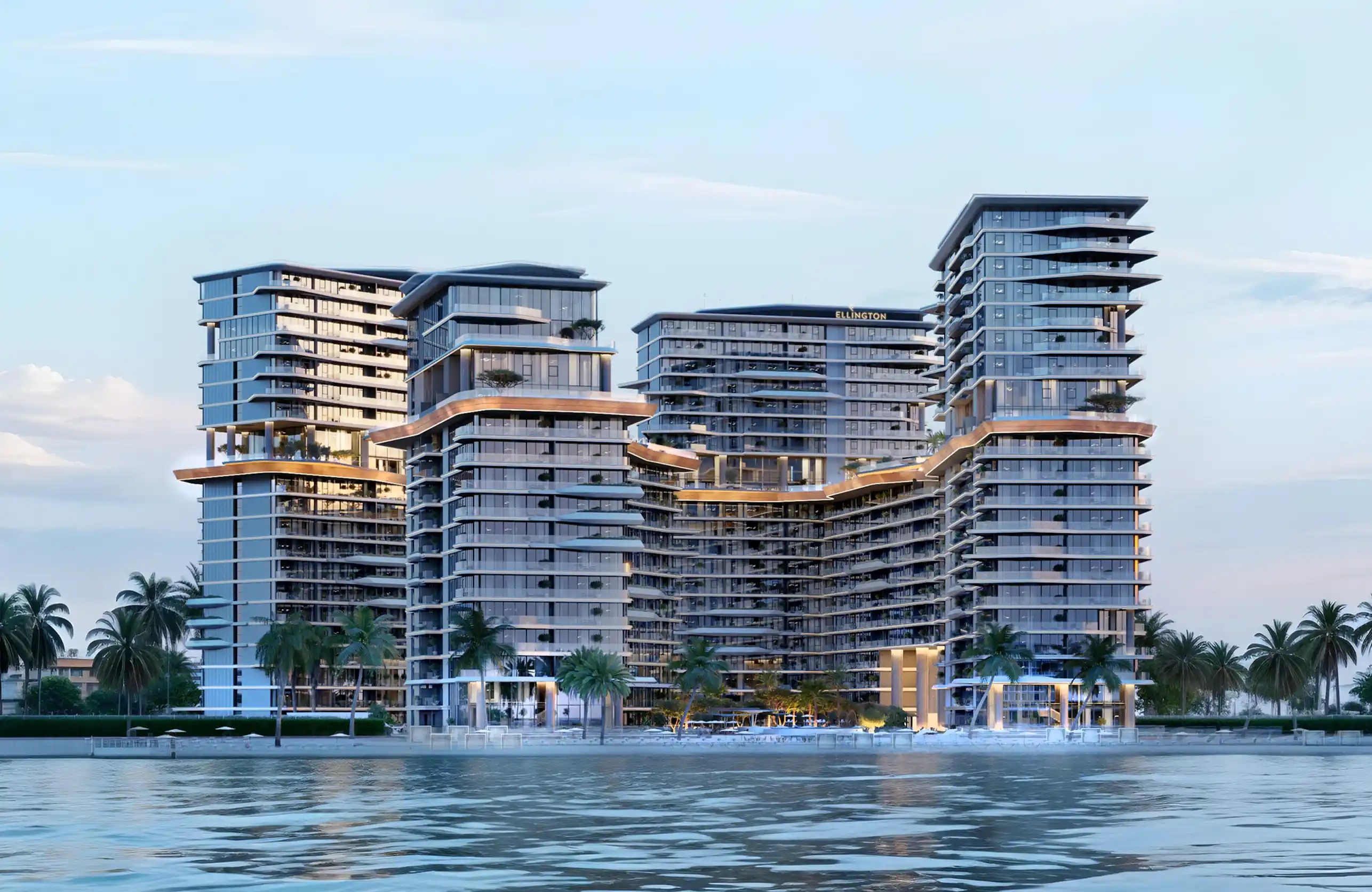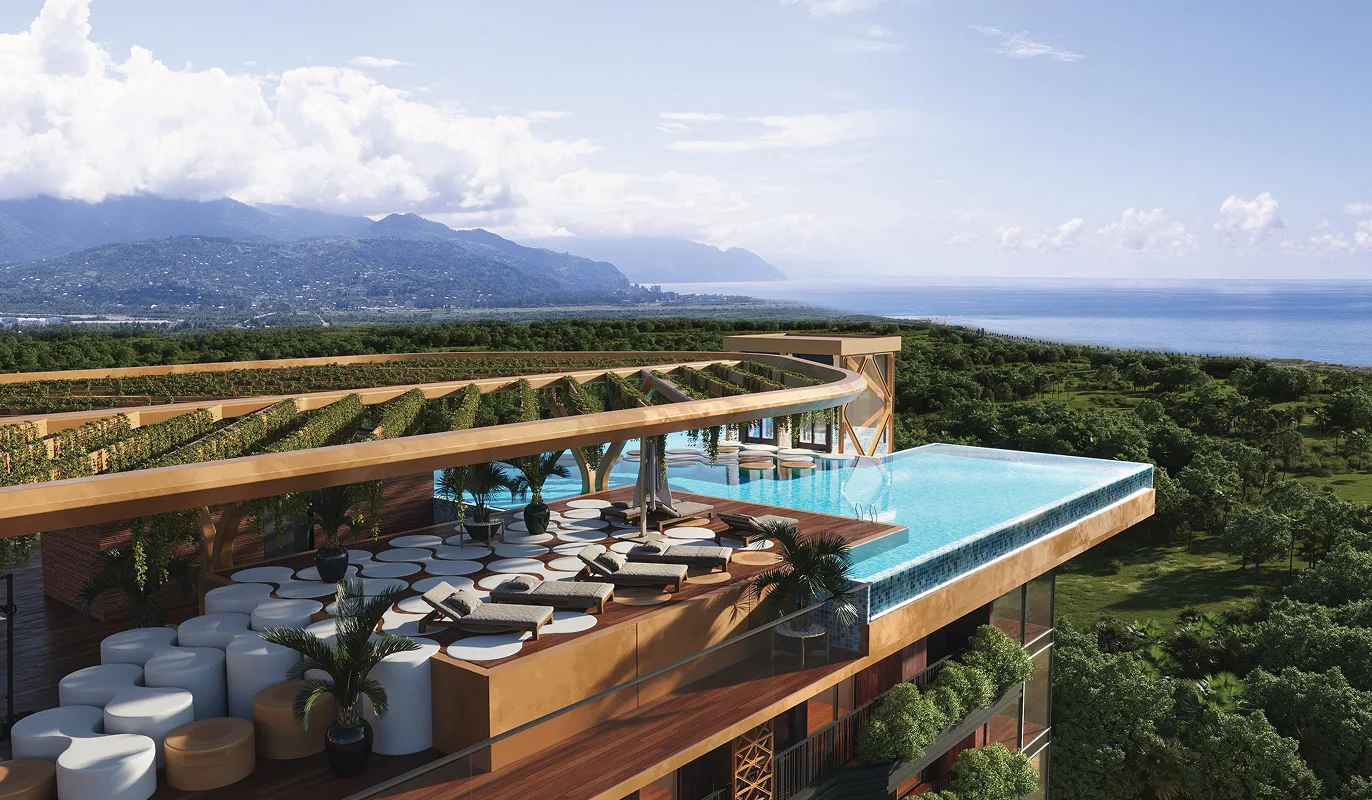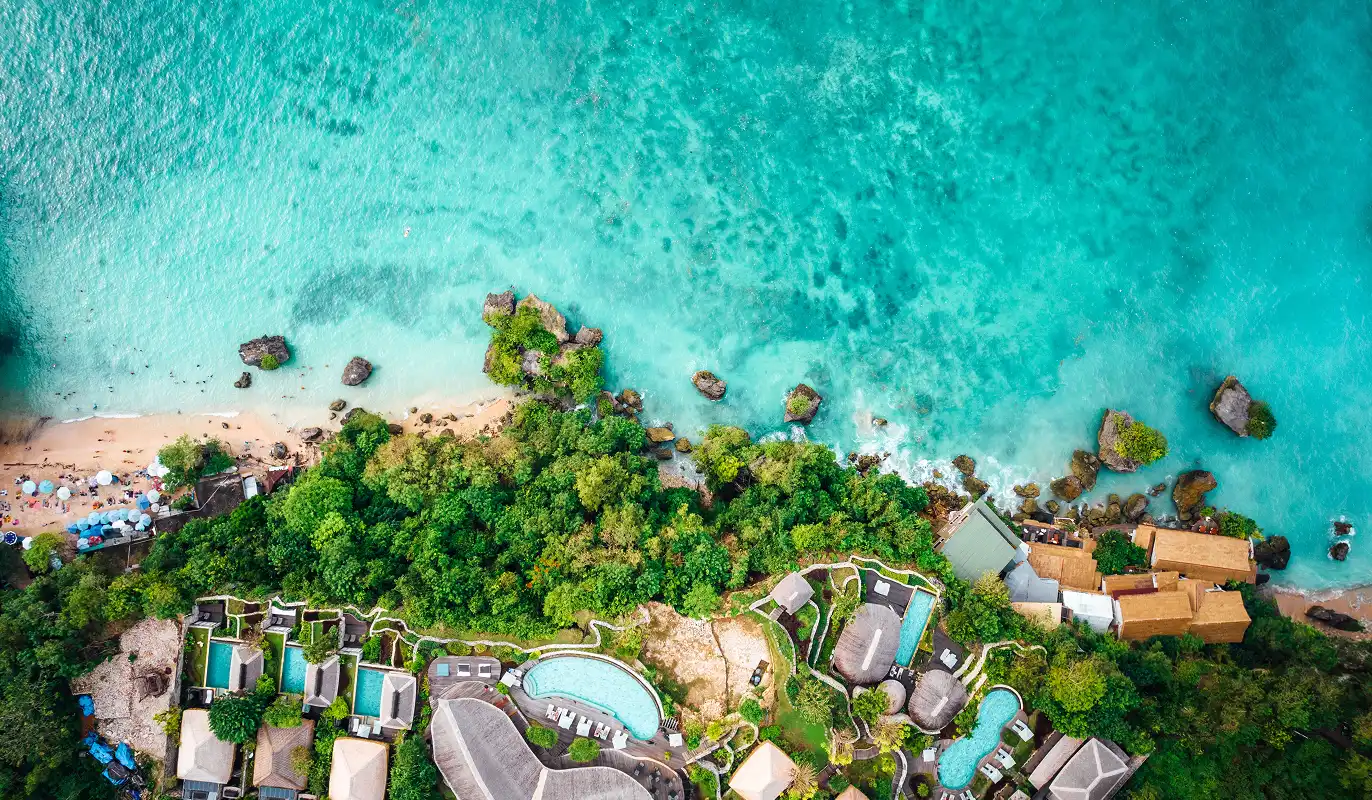Luxury real estate market outlook 2025: trends, hotspots, and returns
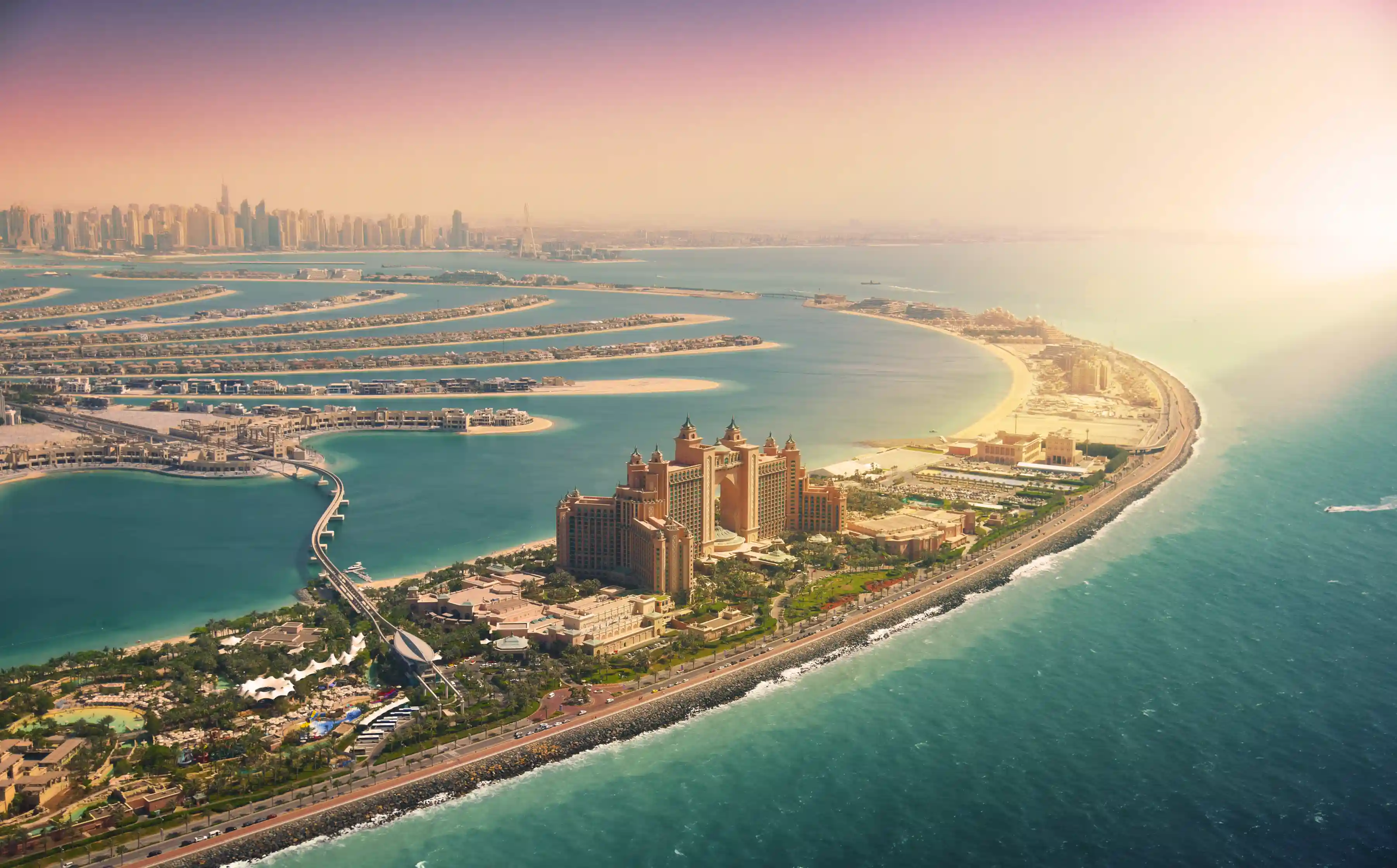
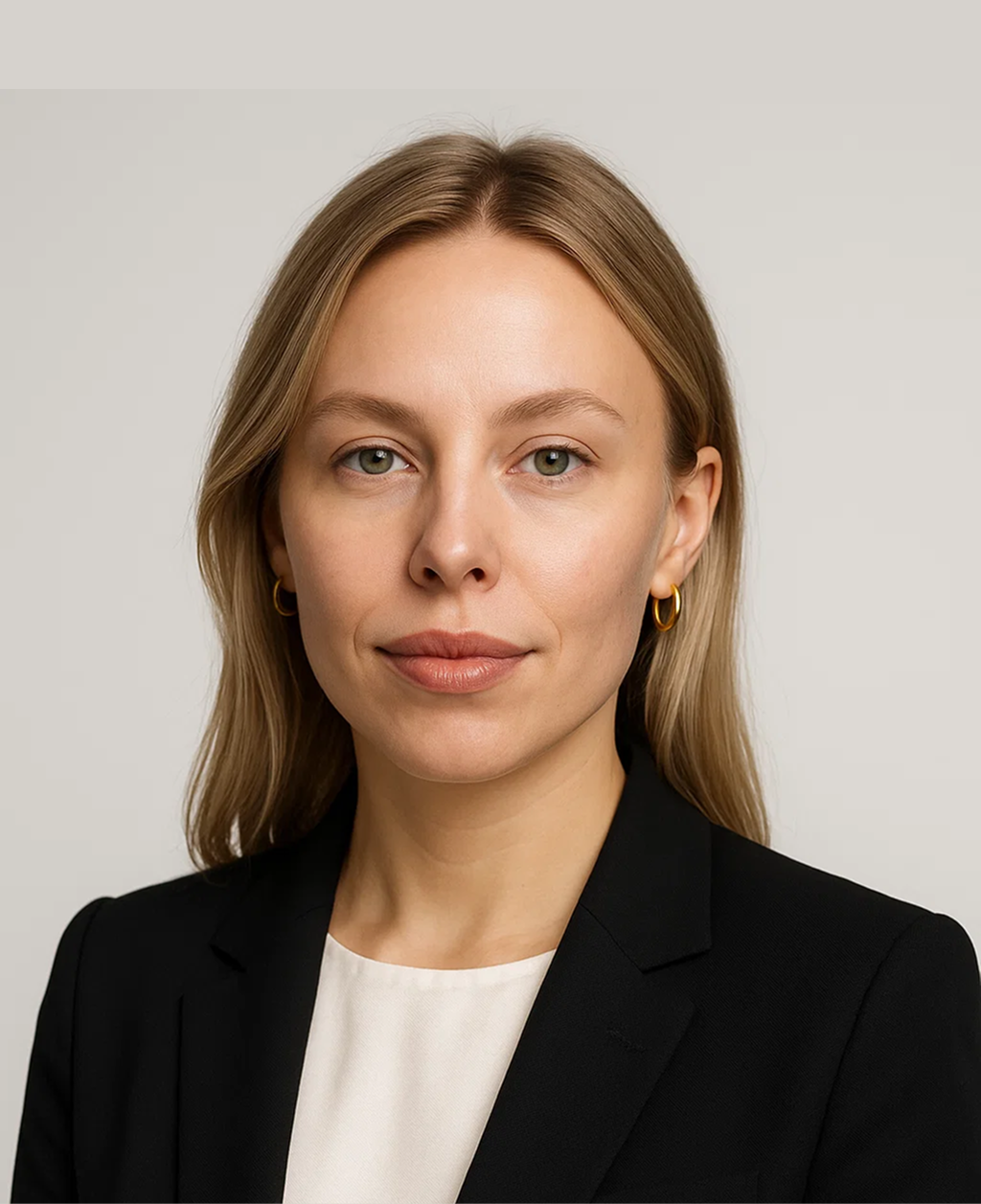
Ksenya Kadesnikova
Investment-Focused Market Analyst
Dubai just sold more luxury homes worth $10+ million than New York and London combined, signaling a major shift in the global luxury real estate market. Meanwhile, a villa project in Phuket sold out in 30 minutes, and Bali's market is delivering some of the world's fastest payback periods at 6.6 years.
These aren't isolated success stories — they're emerging trends reflecting the biggest transformation in the luxury real estate sector. High-net-worth individuals and affluent buyers are abandoning traditional trophy markets for destinations that deliver something better: measurable returns, genuine lifestyle improvements, and strategic advantages like tax incentives and residency options that strengthen their investment portfolio.
This guide maps exactly where the smartest capital is moving in 2025 and why five specific markets — the UAE, Phuket, Bali, Batumi, and Cyprus — are outperforming established luxury hubs on every metric that matters to serious investors.
The landscape of global luxury real estate: overview
Luxury buyers are shifting where they invest, according to recent market research. Between 2022 and 2024, Dubai’s $10 million-plus luxury home sales rose by just over 90%, while transactions in London’s £5 million-plus fell about 15% in 2024.
Phuket saw foreign investment rise 24% in just the first half of 2025, and Bali now offers payback periods around 6.6 years, among the fastest in the world for real estate investment. This is not random fluctuation but clear market trends in where smart money goes.
Old prestige markets relied on status and exclusivity. Today’s buyers want solid numbers, better daily living, and advantages like residency. They are moving capital from famous addresses with modest yields to destinations with strong market fundamentals and real lifestyle benefits.
Five destinations are capturing the majority of this capital reallocation as top luxury real estate markets:
The UAE leads with its combination of 6.5–12% rental yields, Golden Visa residency, and a reputation for security that is attracting global investors. Real estate experts identify it as a key market for high-end real estate.
Phuket, Thailand, offers mature infrastructure plus explosive growth potential.
Bali, Indonesia, delivers scarcity-driven appreciation backed by billion-dollar infrastructure investments.
Batumi, Georgia, provides early-stage access to Europe's fastest-growing luxury hub with competitive home prices.
Cyprus combines EU stability with investor-friendly residency from just €300,000.
These destinations favor substance over status. They offer clear rules, reliable rental demand, visible infrastructure projects, and residency options that many traditional hubs can’t match. The luxury market continues to evolve toward destinations with measurable performance.
The real question isn’t if the shift will continue but how quickly investors can position in places where fundamentals drive performance. Those who act early in these markets are better placed to benefit from both income and long-term growth.
5 trends reshaping the luxury real estate markets in 2025
The luxury housing market is undergoing major changes as developers adapt to what affluent international buyers want today. Across the world, five big trends are transforming how people think about investing in high-end property and the kind of lifestyle it should deliver. These new directions are setting the stage for the future of prime real estate and reflect broader global investment trends in early 2025.
1. Branded residences and international partnerships
One of the fastest-growing trends gaining traction in the luxury market is the rise of branded residences — homes created in partnership with luxury hotel and lifestyle brands. These properties offer more than just living spaces. Residents enjoy hotel-level services such as concierge assistance, spas, fine dining, housekeeping, and gyms, all managed by world-class operators.
For buyers, the appeal goes beyond lifestyle. Branded residences tend to hold their value better and often deliver stronger rental returns because of the reputation and global reach of the brands behind them.
Examples:
In the UAE, leading real estate developers work with top hotel brands to deliver private beaches, high-end spas, and concierge services.
In Phuket, companies like The Standard and Dusit International manage residential projects that achieve higher rental rates.
In Batumi, global names including Wyndham, Radisson, and Rotana are redefining the city’s luxury standard.

Emaar Properties is building a new waterfront master community in Dubai in collaboration with the VIDA brand, whose hotels achieved an average occupancy of 79% in 2024
2. Integrated and lifestyle-driven communities
Today’s high-end buyers want more than just a luxury apartment — they want an environment that supports their lifestyle. Developers are responding by building integrated communities that feel like entire small cities, offering everything from dining and entertainment to wellness centers, retail, and private beaches.
What sets the newest projects apart is their focus on tailored lifestyles: some are family-oriented, others focus on wellness, sport, or pet-friendliness. This segmentation creates niche communities that foster a stronger sense of belonging while commanding premium pricing due to their exclusivity.
Examples:
Batumi stands out with developments combining hotels, casinos, restaurants, spas, water parks, and cinemas, creating full luxury ecosystems within one complex.
Phuket offers both pet-friendly estates and wellness-focused communities with gyms, pools, and green spaces.
In Dubai, projects like Creek Harbour and Ghaf Woods highlight eco-living with vast parks and water features.

A 5‑star Rotana hotel with a casino and private beach access is under construction in Batumi, with handover in Q4 2027
3. Premium views and artificial waterfronts
Whether it’s a sea view, mountain backdrop, or skyline panorama, properties with views consistently top the luxury market. Not only do they provide a better lifestyle, but they also deliver stronger investment returns, with higher resale values and rental appeal.
In places where natural views are limited, developers are even creating artificial waterfronts to meet demand.
Examples:
Dubai has built entire artificial islands, like Palm Jumeirah, to create premium waterfront living.
Batumi is also constructing artificial islands like Ambassadori Island, adding exclusive coastal communities.
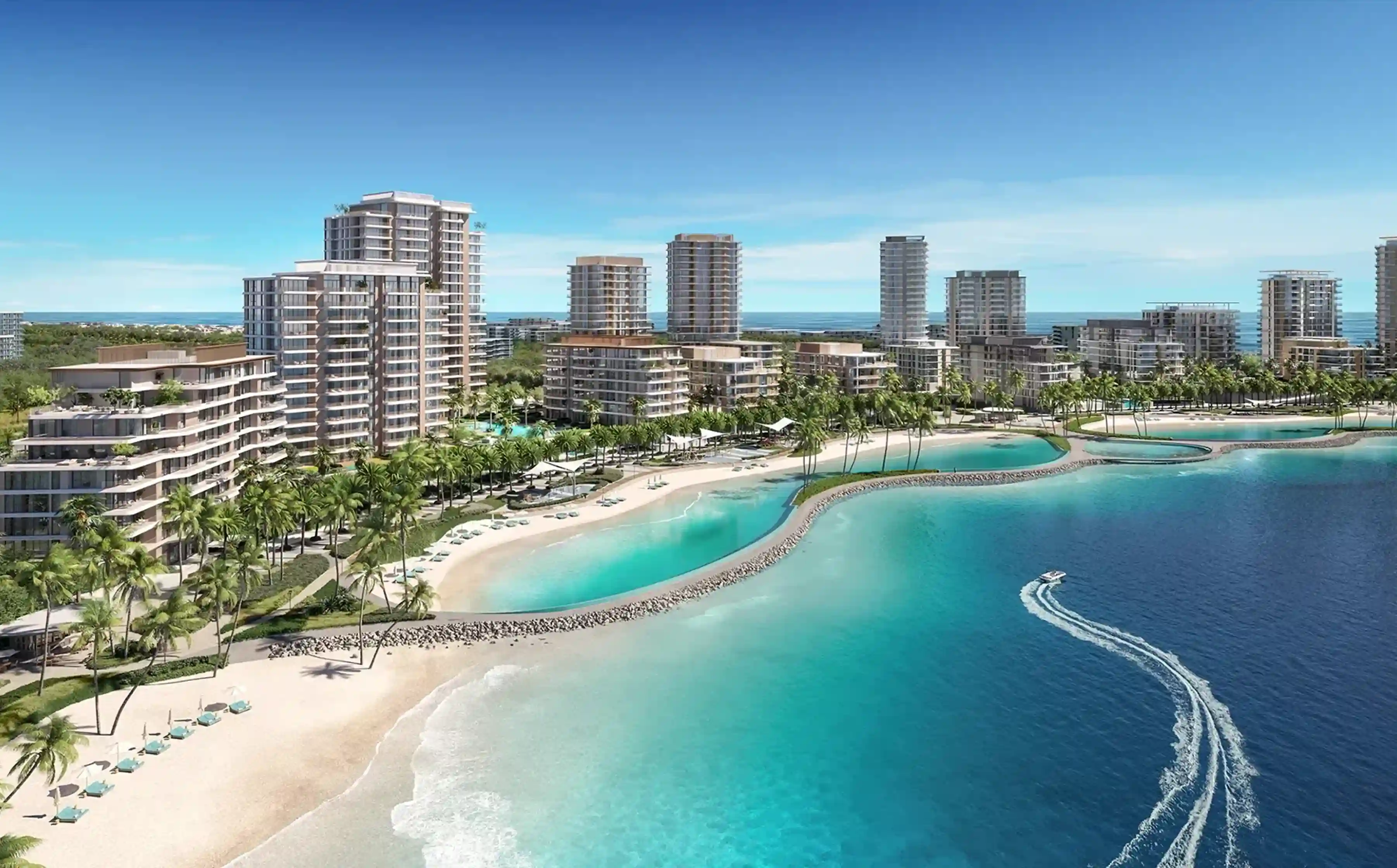
A premium coastal community is taking shape on the primary beachfront of the Dubai Islands, an artificial archipelago, offering panoramic bay and marina views
4. Unique concepts and turnkey living solutions
Today's developers active in the luxury sector are creating complete lifestyle products that combine distinctive concepts with hassle-free ownership. Projects now feature bold themes — cutting-edge architecture and smart home technology — to stand out in competitive markets.
But uniqueness alone isn't enough. High-end buyers want convenience and turnkey solutions that eliminate setup stress. Modern developments respond with fully finished, move-in-ready homes plus comprehensive service packages.
These turnkey offerings typically include:
Designer interiors and complete furnishing
Premium appliances and smart home systems
Professional property management
Concierge assistance and club memberships
Maintenance programs and insurance coverage
The result is an exclusive asset that's ready for living or rental income from day one, without any additional effort from the owner.
Examples:
Bali leads with innovative concepts like luxury tennis and padel clubs in Canggu, boutique hotels with integrated diving centers, and "ready-to-earn" investment villas with guaranteed first-year rental income.
Batumi uses distinctive architecture — including Japanese-designed skyscrapers — to position itself as the "Dubai of the Black Sea," offering fully serviced luxury living.
Cyprus emphasizes smart technology integration with automated home systems and Class A energy efficiency ratings, delivering both innovation and convenience in a complete package.

Branded Wyndham residences in Bali are being built in an eco‑modern style on the oceanfront, with all units delivered turnkey — fully furnished and equipped
5. Villas and private homes over high-rises
Privacy and personal space are becoming more important to affluent buyers. As a result, many now prefer villas, townhouses, and private estates over high-rise condominiums. These single-family home options allow for customization, exclusivity, and less crowding — qualities that are highly prized in today’s luxury market.
Because supply is limited compared to apartments, villas and estates usually see faster value growth, making them both a lifestyle upgrade and a strong investment.
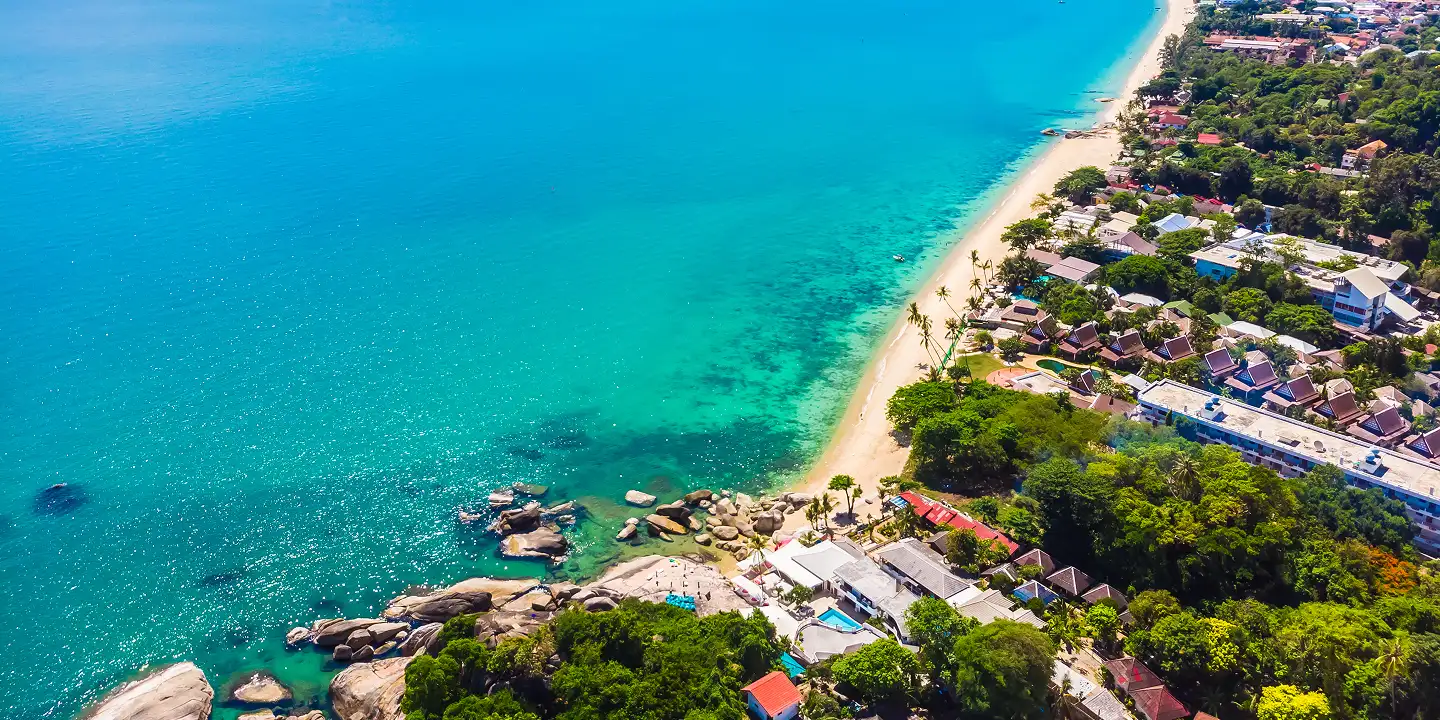
Need help finding the right property?
We vet every developer for track record, financial strength, and buyer feedback so only secure, high‑potential options make the cut.
United Arab Emirates: high‑yield luxury with residency benefits
The UAE’s luxury property market is growing at an exceptional pace, driven by strong demand and limited supply. In 2024, Dubai became the world leader in ultra-high-end real estate, with 435 homes selling for over $10 million — surpassing even New York and London.
Market performance
The market has demonstrated remarkable price appreciation, with luxury property values rising nearly 17% in 2024 compared to the previous year. Over the past 5 years, prices have increased by approximately 170% overall, establishing the UAE as one of the world's strongest performing luxury markets.
The biggest challenge facing the market is acute supply shortage. Villa scarcity is especially pronounced — while developers launch numerous apartment projects, only one villa or townhouse project comes to market for every thirty apartment buildings. As a result of this imbalance, villa sales in the first quarter of 2025 surged by 94% compared to the same period last year, fueling price increases across the entire luxury sector.
Market growth drivers
Tourism growth. The UAE has emerged as a premier winter destination, with Dubai alone welcoming over 17 million visitors in 2024. The country aims to attract up to 45 million tourists annually within the next decade, creating a booming market for short-term luxury rentals.
Eco-tourism initiatives, including the expansion of the Ras Al Khor nature reserve, add another layer of appeal for environmentally conscious luxury travelers.
Wealthy relocation. In 2024, more than 7,000 millionaires relocated to the UAE, making it one of the top destinations for high-net-worth individuals worldwide. This influx of wealthy residents creates constant demand for premium real estate and supports sustained market growth.
Golden Visa program. Foreign buyers investing at least $545,000 in property can obtain a renewable 10-year residency visa, providing long-term security and making UAE property especially attractive to international investors seeking both lifestyle and residency benefits.
Prime locations
Dubai. Established luxury hotspots include Palm Jumeirah, Downtown Dubai, and Dubai Marina. Emerging districts like Dubai Islands, Dubai Creek Harbour, and Maritime CIty offer prestige combined with growth potential.
Abu Dhabi. Saadiyat Island and Yas Island lead the capital's luxury scene, anchored by cultural attractions like the Louvre Abu Dhabi and entertainment venues including Formula 1 racing on Yas Island.
Ras Al Khaimah. Al Marjan Island is rapidly becoming a luxury destination, with the planned casino set to attract global tourism and increase property demand.
Selected premium-class projects in the UAE
Investment returns
Rental Yields. The market offers attractive annual rental returns with long-term leases generating 6.5–9% and short-term rentals achieving 7–12%, providing investors flexibility to optimize income based on market conditions and property management preferences.
Capital Growth. Properties demonstrate solid appreciation potential with annual capital growth ranging from 7–10%, while off-plan projects typically appreciate 25–40% in value by completion, offering substantial returns for investors willing to commit to development timelines.
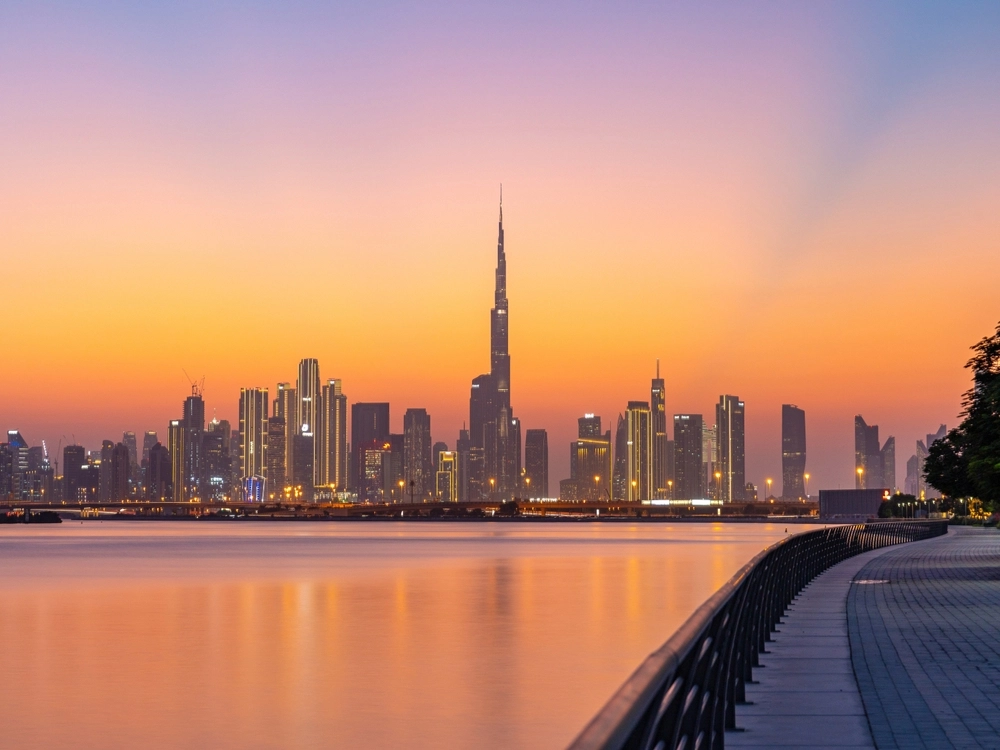
Want early access to top investment deals?
We’re among the first to know about hottest presales to help clients secure the best units before public launch.
Phuket, Thailand: branded resort living and steady rental demand
Phuket’s premium property market is in the spotlight in 2025. Strong tourism, steady foreign investment, and new infrastructure have turned the island from a holiday retreat into one of Asia’s hottest real estate hubs. Buyers are no longer just looking for a vacation home — they see Phuket as a place where lifestyle and returns meet.
Market performance
The premium real estate sector has reached a historic milestone. For the first time in 15 years, luxury villas outsold condominiums. In 2024, villa sales reached $5 billion, showing a clear shift in demand: buyers want more space, privacy, and exclusivity.
Investor appetite remains strong in 2025. Foreign capital inflows jumped 24% in the first half of the year compared to 2024. Projects are selling out at lightning speed: one Bang Tao villa development sold out in 30 minutes.
Prices are rising steadily too. Analysts forecast 15–20% annual growth in Phuket’s premium market over the next 5 years.
Market growth drivers
Tourism revival. Thailand is expecting 38–40 million international visitors in 2025, which has been named the “Year of Tourism and Sports.” This rebound in travel is creating strong demand for rental properties.
Economic stability. With inflation projected at just 0.2% and GDP growth adjusted to 2.2%, Thailand offers both a stable currency and a predictable investment environment.
Big infrastructure projects. Major projects are set to reshape the market. The Tomorrowland Festival, running from 2026 to 2030, will attract hundreds of thousands of visitors each year. At the same time, the construction of a mega entertainment complex, which will feature a casino and a Formula 1 track, is scheduled to begin in 2026.
Developer incentives. Luxury developments are now launching with attractive extras, such as furniture packages, guaranteed rental returns of 5–7%, and payment schedules that extend up to 5 years after completion. Well-known global hotel brands such as The Standard are also entering the market, bringing with them professional management and strong brand recognition.
Prime locations
The most attractive areas for property investment are Laguna, Bang Tao, Layan, and Rawai. These neighborhoods combine everyday convenience with a resort lifestyle. Families benefit from top international schools such as UWC and HeadStart.
Shopping and dining are centered around upscale destinations like Boat Avenue and Porto de Phuket. Golf courses, vibrant communities, and some of Phuket’s most pristine beaches add to the appeal, making these areas especially popular with both residents and investors.
Selected premium-class projects in Phuket
Investment returns
Investors are seeing competitive numbers:
Rental yields each year: 5–8% for long‑term stays and 7–12% for short‑term rentals, quoted in dollars.
Capital appreciation: 10–15% per year during construction and 5–8% per year once the property is completed.
Branded residences often achieve 15–20% higher rental rates than comparable non‑branded properties.
Bali, Indonesia: scarcity‑driven growth and top occupancy
Bali’s luxury property market is now one of the most attractive places to invest worldwide, with strong returns that beat many other destinations. The average payback period is about 6.6 years, which is among the fastest globally.
Market performance
Property prices have risen sharply. The average cost per square meter grew by 51% from 2021 to 2024. Growth picked up in 2024, with premium areas such as North Badung and Tabanan showing annual increases of 13.6% and 22.7%. Rents also climbed 15% to 20% in 2024.
This is not a speculative spike. Price growth is supported by solid fundamentals. Strict rules on building density and height, combined with limited developable land, keep supply tight. As a result, values have a stable base for long‑term growth, and average occupancy typically reaches 75 to 80%.
Market growth drivers
Tourism excellence. Bali is a world‑renowned destination, regularly named among the best islands by major travel platforms. The island welcomed a record 6.3 million visitors in 2024, with expectations to surpass 6.5 million in 2025. In prime locations, occupancy can reach up to 90%, supporting steady rental income for investors.
Infrastructure revolution. A transformative program of about one billion dollars through 2029 is reshaping the island. The plan includes:
new international airport,
metro system,
ring road with new interchanges and tunnels,
port expansions,
set of 12 major projects including cultural centers.
Work is scheduled to start in late 2025 and complete by 2028, improving connectivity and lifting values in nearby areas.
International brand validation. Global hotel groups such as Accor, Radisson, and Wyndham operate widely in Bali, bringing international standards for management and operations. Branded properties like Finns Bali command premium rates and maintain stronger occupancy, which supports higher, more reliable returns.
Prime investment locations
The Bukit Peninsula, including Uluwatu and Nusa Dua, is the luxury tourism epicenter with dramatic cliffs, pristine beaches, and world‑class resorts. It consistently achieves the highest prices and rental rates.
Canggu, including Berawa, is a vibrant hub for expats and remote workers with high liquidity and strong rental demand. Premium villas and modern lifestyle complexes make it a favorite for short‑term and long‑term stays.
Ubud is the cultural and wellness heart of Bali, appealing to travelers seeking nature and tranquility. Luxury boutique properties and jungle villas perform well with longer stays.
Selected premium-class projects in Bali
Investment returns
Premium properties deliver strong annual yields in dollars. For long‑term rentals, typical returns are 8–12%. For short‑term rentals, returns are 10–16%.
Top‑tier locations such as Bukit and Nusa Dua often achieve results at the upper end of these ranges. Professionally managed assets from major brands commonly deliver competitive yields, and specialized concepts such as premium sports complexes can reach up to 25% a year.
Capital appreciation is also significant. During the construction period, values often grow 10–20% per year. For completed properties, typical annual growth is 5 to 10%. Off‑plan premium properties can still rise 30–40% by completion.
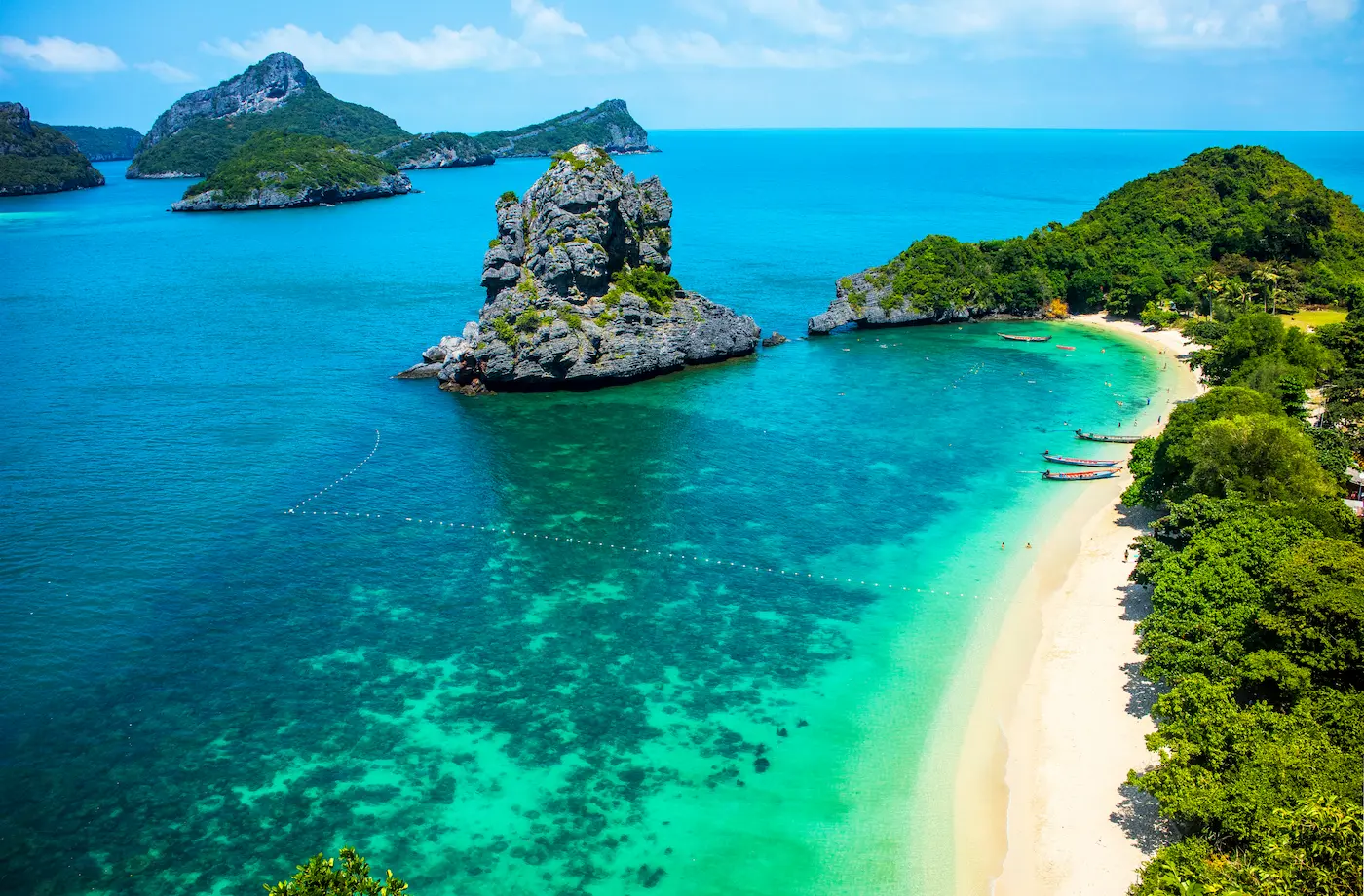
Know your returns before you invest
We’ll assess your goals and opportunities and run the numbers.
Batumi, Georgia: Black Sea boom with rising international brands
Batumi’s luxury property market is gaining strong momentum in 2025 and stands out as one of the most dynamic investment destinations in Eastern Europe. Average prices reached $1,200 per square meter in the first quarter of 2025, up 10% from the previous quarter. Such quarterly growth is usually seen over a full year, which signals an exceptionally active market.
Market performance
Property transactions in Batumi grew by 6.4% in February 2025, even as activity in other Georgian cities such as Tbilisi slowed. Foreign investors provide 71% of total regional investment, which supports stability and steady capital inflows.
If current trends continue, analysts expect prices to rise another 20 to 30% over the next year. The premium segment is becoming more refined, with distinctive, high‑quality properties showing the strongest price gains and buyer interest.
Market growth drivers
Tourism infrastructure development. Batumi’s rise as a major Black Sea destination is driving consistent demand. The city welcomed 301,800 visitors in the first quarter of 2025 and 315,000 in the second quarter, maintaining solid flows even in traditionally quieter months. Premium homes achieve nightly rates up to $152, supporting strong year‑round rental yields.
Strategic urban planning. A new general plan introduces tighter coastal density rules and invests in modern transport, including a bus rapid transit system. These upgrades make the city more organized and accessible. Landmark projects such as the artificial islands further boost Batumi’s international profile.
Economic fundamentals. Georgia’s economy is on a strong footing. The IMF raised its 2025 GDP growth forecast to 7.2%, reflecting broader confidence. This stability attracts international capital and supports sustainable growth in real estate.
International brand presence. Global hospitality groups including Wyndham, Radisson, and Rotana operate in Batumi, bringing international standards of management. The entry of large developers such as the UAE’s Emaar Group points to strong long‑term confidence.
Prime locations
Gonio and Kvariati — Pristine beaches and growing high‑end hotel and residential projects. Strong rental demand from discerning travelers.
New Boulevard — A lively district with parks, shopping, and entertainment. Properties here show notable price growth thanks to constant tourist traffic.
Old Batumi — The historic center attracts culture‑minded visitors. Unique buildings command premium prices and steady demand.
Artificial islands — The flagship Ambassadori Island project showcases the future of the market with luxury residences, hotels, and entertainment on a scale comparable to Dubai.
Selected premium-class projects in Batumi
Investment returns
Rental yields. Premium properties deliver 7 to 10% per year for long‑term rentals and 10 to 12% for short‑term rentals in $. Standout projects can exceed the upper end of these ranges in peak summer months thanks to strong tourist demand.
Capital appreciation. For completed resale properties, typical growth is 6 to 9% per year. For properties under construction, annual growth usually ranges from 10 to 30%, with premium new projects often achieving the higher end of this spectrum.
Cyprus: EU stability with investor‑friendly residency
Cyprus’s luxury property market has strong growth potential. The premium segment makes up a large share of activity, accounting for 23% of all transactions in recent years and generating more than €936 million in turnover. This points to both scale and investor confidence.
Market performance
The market is moving differently across property types. Premium house contracts grew about 3% in Q3 2024, while average villa prices fell 8% in the same period. This signals a helpful correction for buyers. At the same time, apartment sales jumped 42% year over year, driven by relocations of international companies and a growing expat community.
Two‑bedroom apartments are the most liquid and offer flexible exit options. Demand in the premium segment is expected to accelerate in 2025, especially in coastal locations where infrastructure upgrades and international interest are strongest.
Market growth drivers
International investment surge. Foreign demand is a key engine of growth. In 2023, international purchases rose 5.7% from the prior year, with 4,351 homes bought by non‑residents. In December 2023, non‑EU buyers outpaced EU buyers by 84%, showing broad global interest.
Residency investment program. Cyprus offers permanent residency through property purchases from €300,000. The status covers the investor’s family and provides a path to citizenship after 8 years of lawful residence, turning a property deal into a gateway to European residency.
Schengen Area integration. Expected entry into the Schengen Area in 2025 would add visa‑free travel across Europe, likely boosting cross‑border demand and supporting price growth.
Prime locations
Limassol is the island’s business and cultural hub with persistent demand for quality apartments. Many projects have completion dates through 2027, pointing to ongoing opportunities.
Paphos, a leader in foreign sales with heavy international investment, focuses on luxury residential complexes, including exclusive villas and premium apartments for global buyers.
Larnaca, a fast‑growing market with new premium projects such as villas and penthouses, offers early‑stage entry in a city on the rise.
Investment returns
Rental yields. Resort areas typically generate 6–8% a year, while the island‑wide average for investment properties is around 4–7% a year. Actual yields vary by location, building quality, and management model.
Capital appreciation. Apartments typically show 6–10% growth per year, while houses average 3–6% per year. Coastal regions have led recent gains, with 2023 growth of 18.5% in Paphos, 14.9% in Limassol, and 13.4% in Larnaca. Off‑plan purchases in select projects can add 15–20% by completion.
The bottom line for the luxury real estate market
In 2025, luxury property is less about status and more about real value. The markets winning attention from luxury buyers are the ones that mix solid returns with great everyday living and options like long‑term residency. Investors who focus on results, not just famous addresses, are getting ahead of a major shift in how wealth grows and is protected through real estate assets.
Places like the UAE, Phuket, Bali, Batumi, and Cyprus aren’t just “up‑and‑coming” — they represent premier destinations for luxury real estate investments.They are built on real fundamentals: growing infrastructure, strong demand, and policies that support owners. Together, these factors compound value over time in ways that traditional prestige markets often can’t match.
Opportunities at the best prices are getting scarce, with reduced time on the market for quality real estate offerings. The smartest moves now are into projects with proven operators, clear track records, and visible catalysts such as new transport links or tourism growth. The next decade will reward those who secure the most livable and profitable locations now, not those chasing yesterday’s prestige later.
FAQ
-
Luxury is about more than just a high price tag. It combines a prime location, the prestige of well-known brands, and a range of lifestyle amenities that create the appeal of luxury for discerning buyers and sellers. Location is key, bringing both privacy and long-term value, whether it’s near landmarks, exclusive neighborhoods, or iconic developments.
Brand partnerships and premium amenities raise the bar even further. Collaborations with names like Armani or Bugatti bring a level of design and service that regular projects can’t match, while features such as private spas, infinity pools, and concierge services create a refined experience. True luxury is about living in a thoughtfully designed environment that blends exclusivity, comfort, and quality. -
Branded residences and hotel-managed properties often deliver stronger financial performance than standard luxury homes, as confirmed by real estate professionals and market reports. With hotel operators handling marketing, bookings, and guest services, they achieve higher occupancy rates and rental returns, while also offering owners a way to earn passive income through structured revenue-sharing programs.
On resale, these properties typically command a 15–30% premium over non-branded homes. The brand name assures buyers of consistent quality, service standards, and long-term value, making these residences attractive to both investors and those seeking a high-end lifestyle. -
Choosing the right developer is critical. Look at their track record and the quality of projects they’ve delivered in the past. Established developers bring proven reliability, while new ones require more careful review of their leadership team and past experience.
You should also check their regulatory standing, partnerships with trusted hotel brands, and the quality of completed buildings. Financial strength matters too — research any history of delays, disputes, or stalled projects. Speaking with existing buyers can give further insight into how trustworthy a developer is. -
By 2025, wellness and technology have become standard features in luxury homes. High-quality gyms, spas, saunas, yoga and meditation spaces, and infinity pools are expected, not optional.
Smart home systems are also essential, allowing residents to control lighting, climate, entertainment, and security with ease. Luxury developments now also pay attention to lifestyle needs, including pet-friendly services like dog parks and grooming. These collective amenities create a complete living experience within the residence itself, addressing the evolving demand for luxury in today's market. -
Smaller units with one or two bedrooms tend to perform best for rental income because they appeal to a wide market and are easy to manage. Two- and three-bedroom apartments balance comfort with investment value, making them ideal for families as well as long-term tenants.
Larger residences such as penthouses and villas cater to more exclusive buyers and high-net-worth tenants. While they may take longer to sell, they can generate strong rental premiums. Above all, well-designed layouts that maximize light, views, and flexibility consistently outperform larger but less practical spaces.
